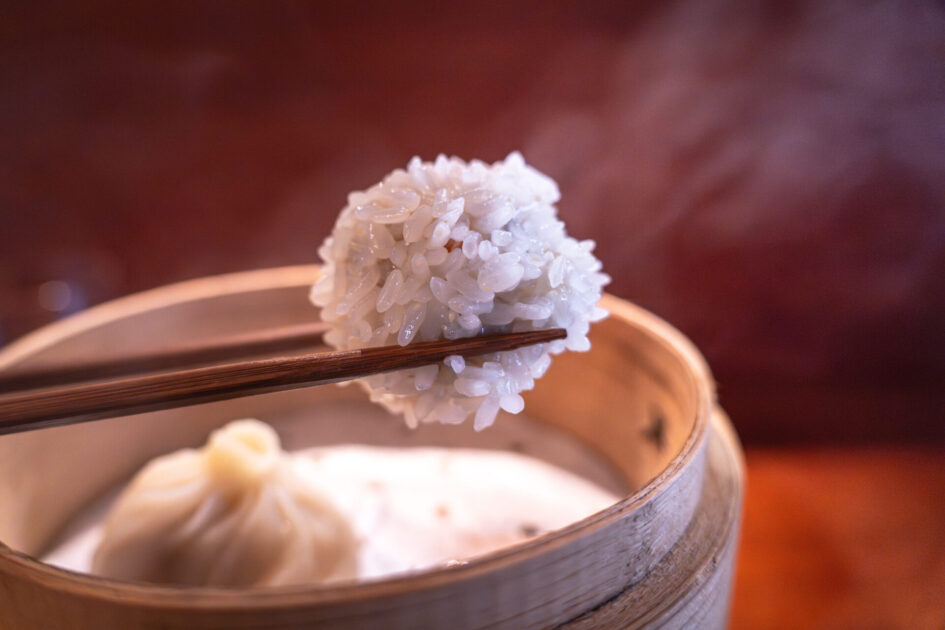CONTENTS
About “KUKO – Chinese Cuisine in Naramachi”
Concept
Quietly nestled in a corner of Naramachi, an old district steeped in history and culture, KUKO aspires to offer Chinese cuisine that gently permeates both body and soul.
Rather than relying heavily on spices or oils, the restaurant’s approach is to carefully draw out the natural umami and nourishing qualities of seasonal ingredients. While rooted in traditional Chinese cooking techniques, KUKO freely incorporates locally grown vegetables and fermented seasonings unique to Nara, resulting in flavors that feel both comfortingly familiar and refreshingly new.
True to its name—Kuko (枸杞), meaning “goji berry” and associated with medicinal properties—the cuisine carries subtle elements of Chinese herbal medicine, leaving a sense of well-being that lingers pleasantly after the meal.
Favoring depth and purity over flamboyance, KUKO offers a rare dining experience: refined Chinese cuisine that feels like a natural extension of everyday nourishment.
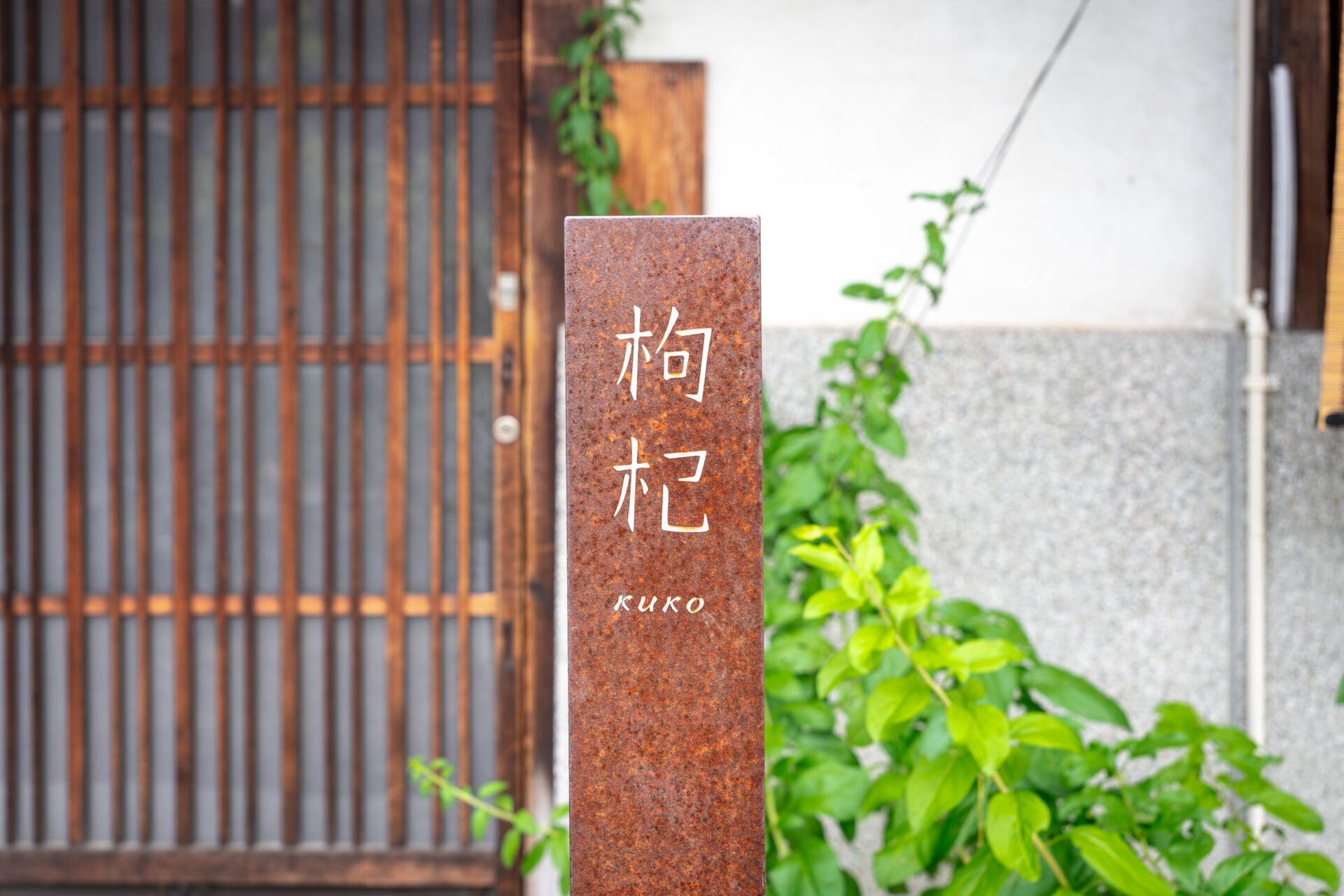
About the Chef
The culinary mind behind KUKO is owner-chef Kazuyuki Miyamoto.
After honing his skills at acclaimed Chinese restaurants such as Fook Lam Moon and Lao Sichuan Piaoxiang, he returned to his hometown of Nara to open his own restaurant.
Rooted in Cantonese and Sichuan techniques, his cuisine incorporates the principles of Chinese herbal cuisine and fermentation, all while maintaining a deep sensitivity to the body’s needs. His courses center around the ideals of “Shindofuji” (the inseparable relationship between body and land) and “Ishoku Dogen” (medicine and food from the same source), making use of homegrown Chinese vegetables, traditional Nara produce, and fermented seasonings.
By moderating the use of spices and oils, Miyamoto’s dishes achieve a quiet, yet deeply resonant presence — food that nourishes both body and spirit.
Recognition and Awards
KUKO’s sincere approach to cuisine and its respect for nature have earned it growing recognition, both in Japan and abroad.
In 2022, it was awarded a Michelin star in the Michelin Guide Kyoto-Osaka + Nara. At the same time, it received the coveted Green Star, which honors restaurants for sustainable practices — a testament to both its culinary mastery and environmentally conscious philosophy.
Additionally, KUKO was awarded 4 Radishes (the second-highest rating) in the 2024 edition of Belgium-based We’re Smart® Green Guide, an international guide to sustainable gastronomy. Very few Japanese restaurants make this list, making this an important marker of KUKO’s global credibility.
In 2025, KUKO earned the Silver Award in the prestigious Tabelog Award 2025, following a Bronze in the previous year — a clear step forward. Among Chinese restaurants in western Japan, KUKO now stands out as one of the most highly acclaimed.
The restaurant has also been selected for multiple consecutive years in the Tabelog Top 100 Chinese Restaurants WEST, further proof that its quiet, contemplative cuisine is resonating through the voices of critics and diners alike.

Dining Prelude
Exterior & Entrance
Tucked away along a narrow lane in historic Naramachi stands a humble machiya townhouse — this is “KUKO – Chinese Cuisine in Naramachi.”
Marked not by a bold signboard but by seasonal flowers quietly welcoming guests, the restaurant blends into its surroundings with refined subtlety.
Passing beneath the noren curtain, you are enveloped by a serene stillness. The warmth of wood, the neatly swept entrance — every detail suggests that this is no ordinary Chinese restaurant.
The exterior, steeped in history and character yet poised with quiet dignity, feels like a prologue to the meal to come — subtly outlining the contours of the culinary experience that awaits.
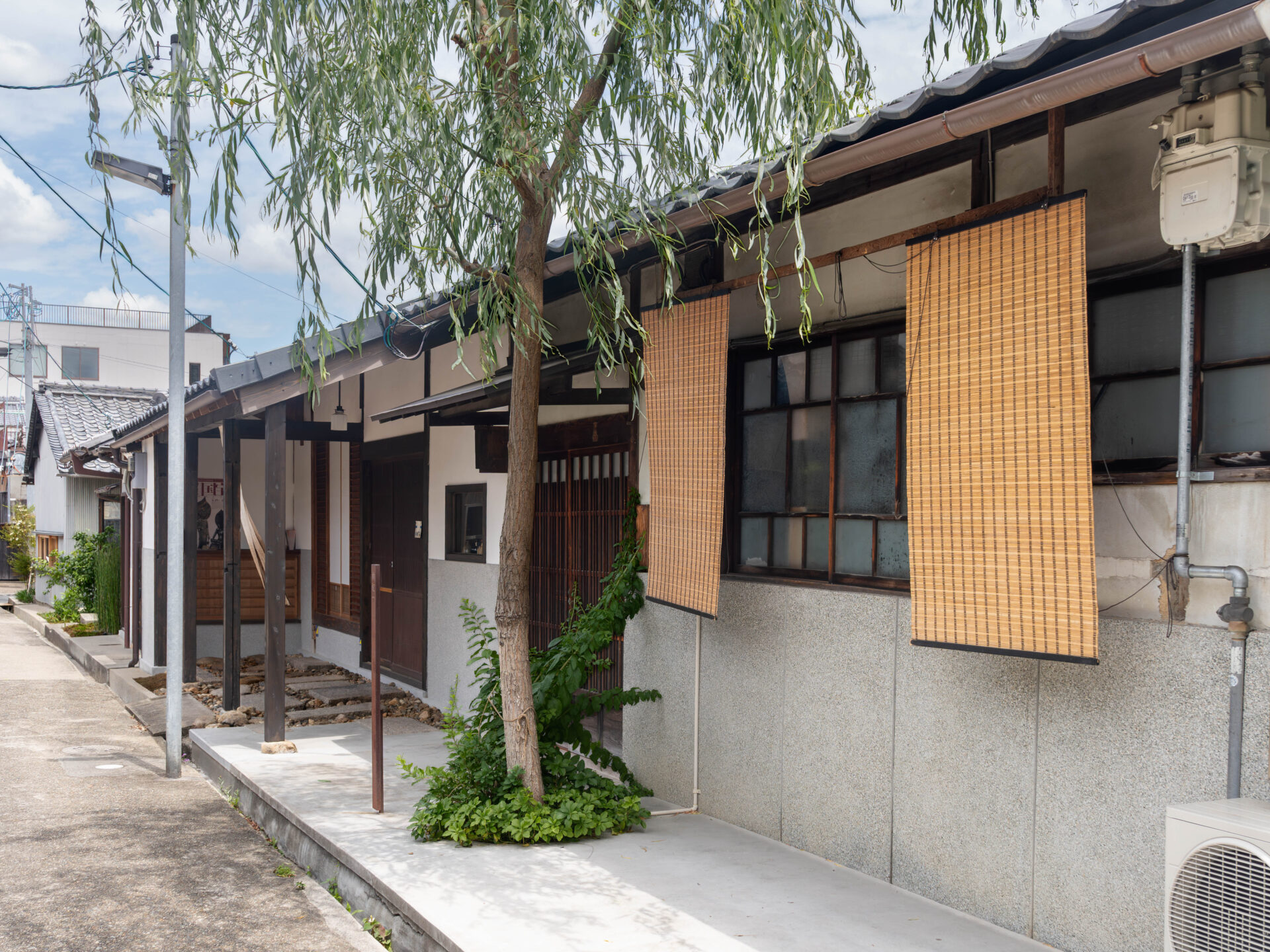
Dining Space
Slide open the wooden door, and you’re met with a tranquil space where old-world charm and a modern Chinese teahouse aesthetic converge. Exposed wooden beams recall the building’s heritage, while minimalist decor and a refined atmosphere set the tone.
Seating is limited, centered around a counter with a view of the open kitchen. The layout values space and calm, with no excessive embellishment — natural wood tables, hand-crafted ceramic tableware, and gentle lighting breathe quiet rhythm into the room.
There is a sense of focused calm — not one of formal stiffness, but of relaxed attentiveness.
The gentle hiss of steam, the soft rhythm of a knife — the sounds and aromas from the kitchen subtly surround you.
Here, the entire space feels like an extension of the meal itself — a seamless part of the dining experience.

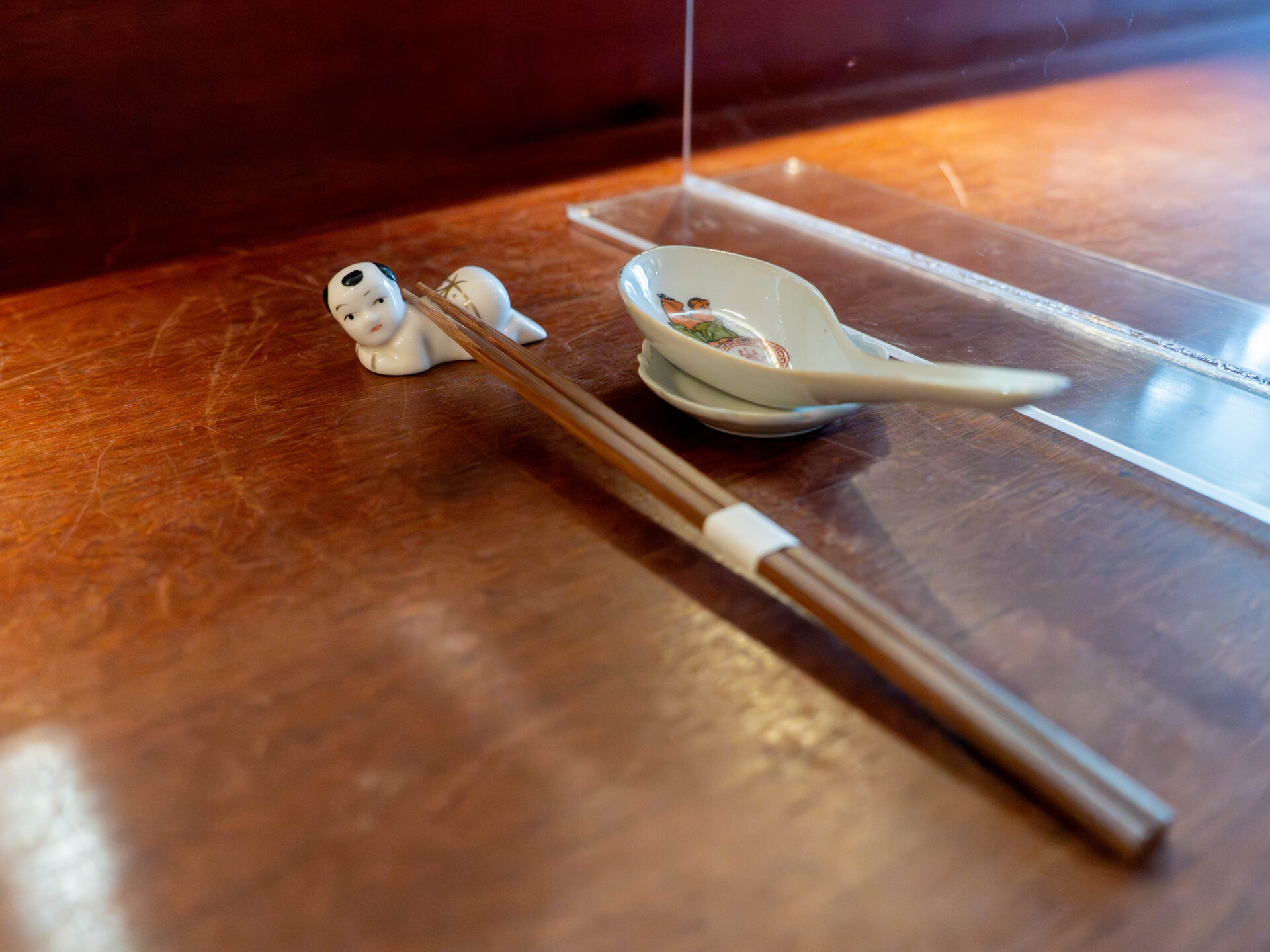
Menu Presentation
At lunch, KUKO offers a course centered around dim sum and tea-time delicacies.
The contents of the course are not printed on a menu but are introduced verbally by the staff before each dish is served, emphasizing the element of surprise and the natural flow of the meal.
Photography is not permitted, underscoring the value of each plate as a fleeting, personal encounter.
Midway through the course, guests have the option to add a serving of Mapo Tofu — a popular dish known for its depth of flavor despite restrained use of spice and oil. This option is offered on the day, not at the time of reservation.
Drinks include a selection of Chinese teas, natural wines, and Shaoxing wine.
Aromatic Tieguanyin oolong and herbal blends are carefully curated to complement the food, enriching the entire experience.
Rather than relying on visuals, KUKO invites you to follow the course through taste and aroma — a special kind of culinary journey that lingers long after the last bite.
Starter Drink
The first drink served is a specialty bancha (coarse tea) from the Miantang region of Fujian Province, selected from the drink menu.
It is paired with spring water sourced from Oku-Ise, carefully chosen by the restaurant to match the character of the tea leaves.
Though classified as hard water, it possesses a unique softness distinct from that of European waters, gently drawing out the aroma of the tea.
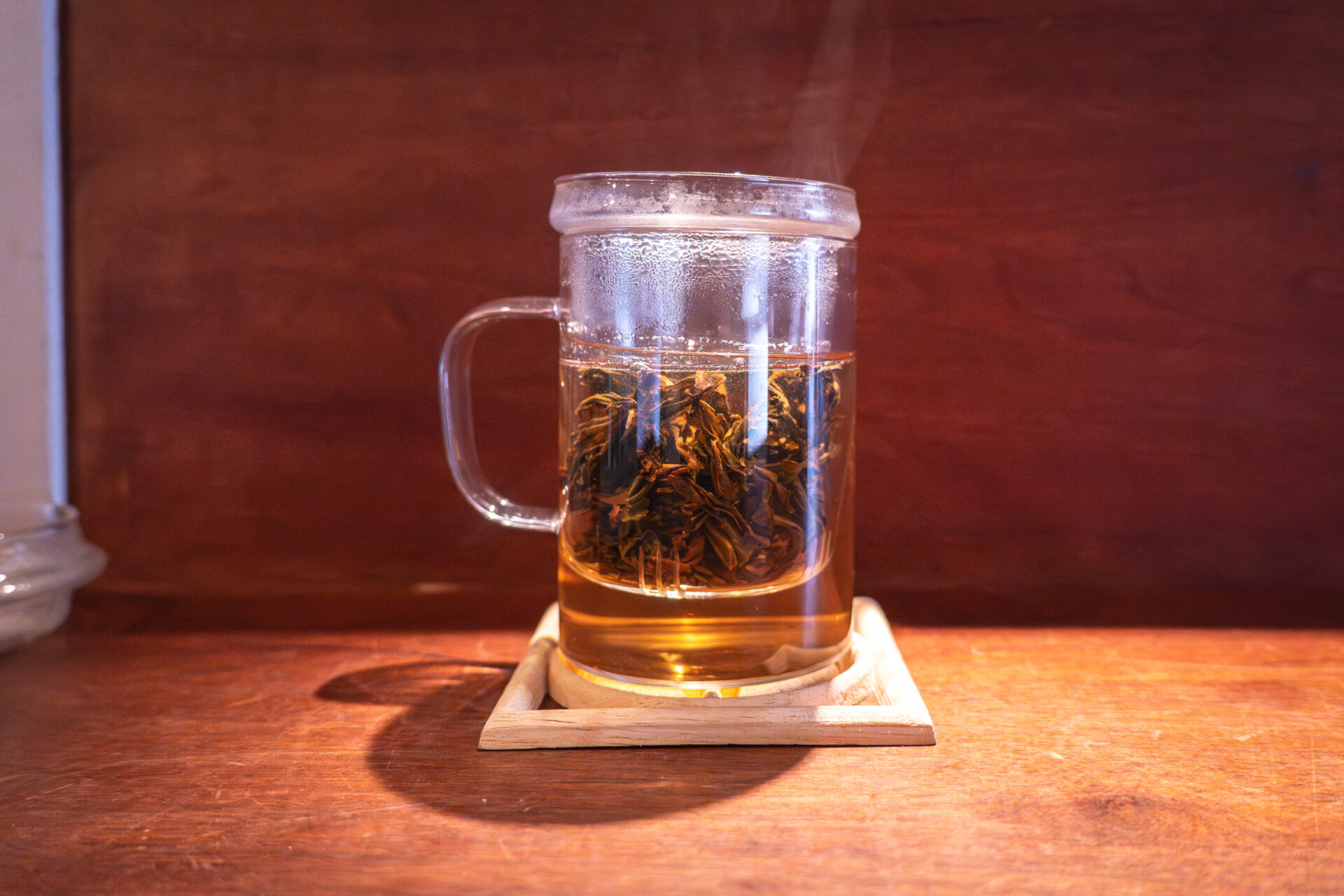
Dishes Tasted
Five Kinds of Appetizers
■ Yamato Jidori Chicken “Mouthwatering Chicken” (Yo-da-re Dori)
Tender, perfectly poached Yamato Jidori chicken is gently layered with a fragrant aromatic sauce.
Its firm, springy texture is elegantly accented by delicate edible flowers, resulting in a calm, lingering first course.
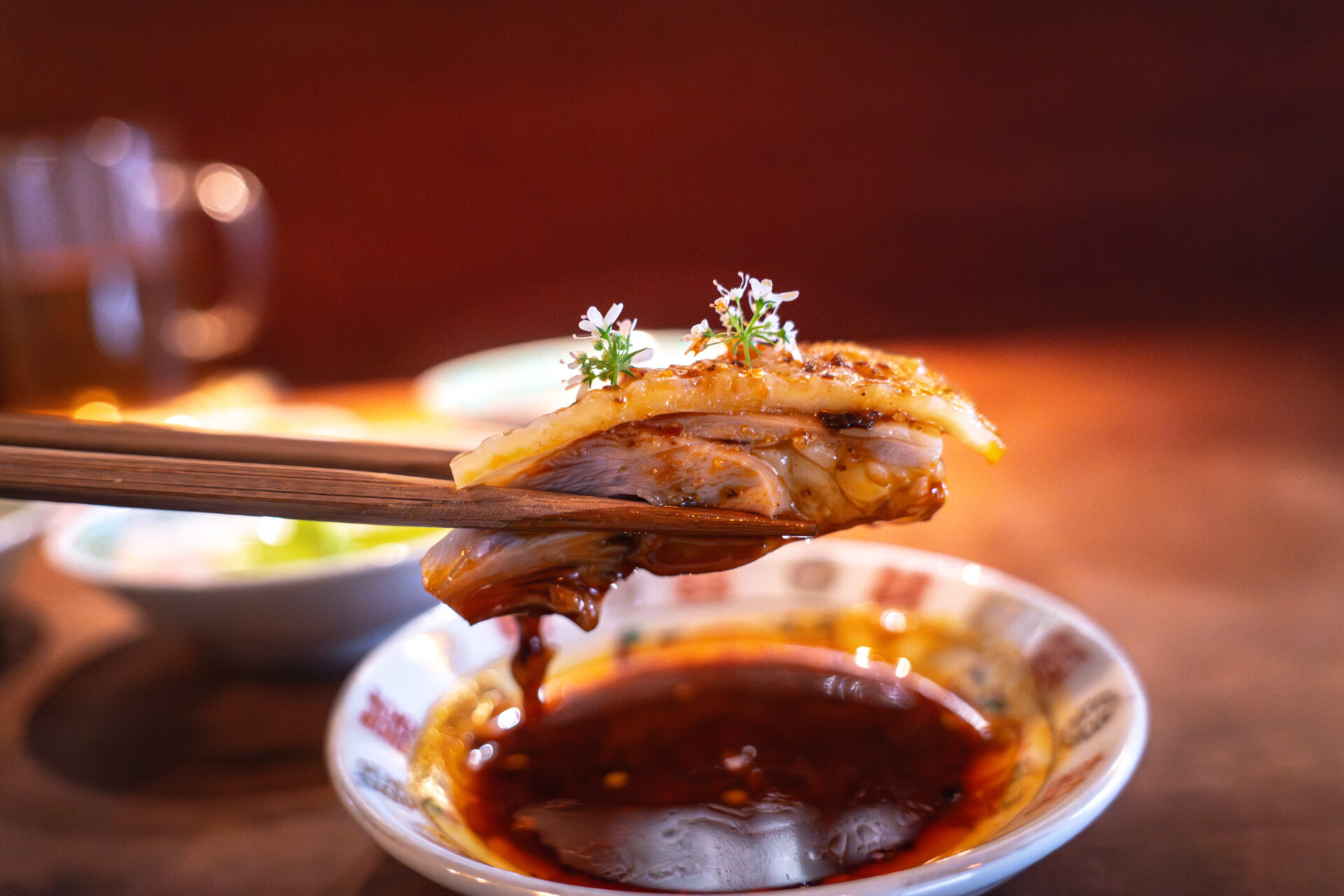
■ Sichuan-Style Spiced Cashew Nuts
Crisp, aromatic cashews are lightly tossed with a blend of Sichuan spices.
The heat is gentle, allowing the fragrant spices to bloom softly on the palate — a quiet, refined kind of stimulation.
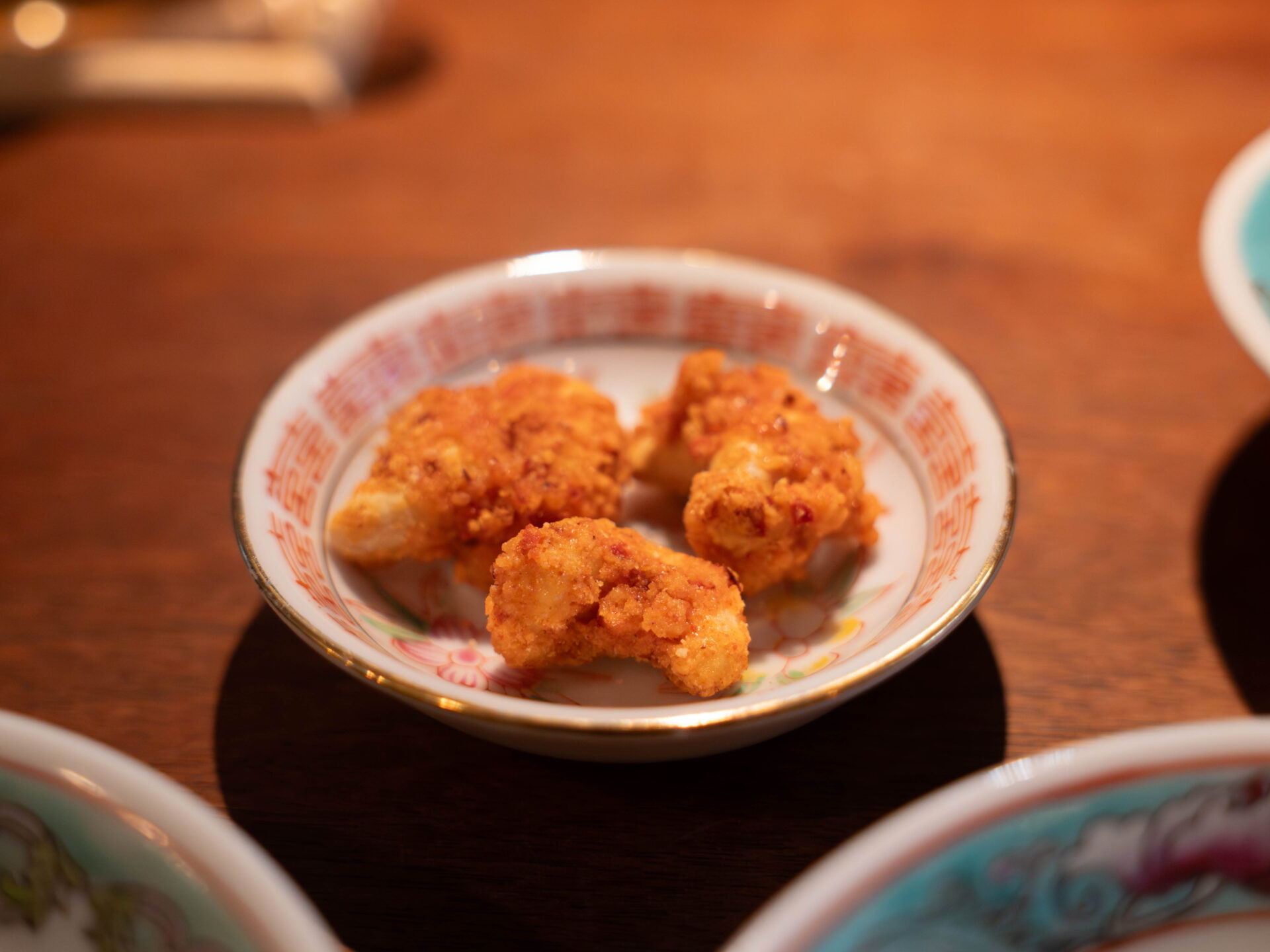
■ Pickled Purple Daikon with Fermented Chili
Thinly sliced purple daikon is marinated in fermented chili and soy sauce.
The sharp kick of heat and the depth of fermentation intertwine, offering a brief but vivid accent among the appetizers.
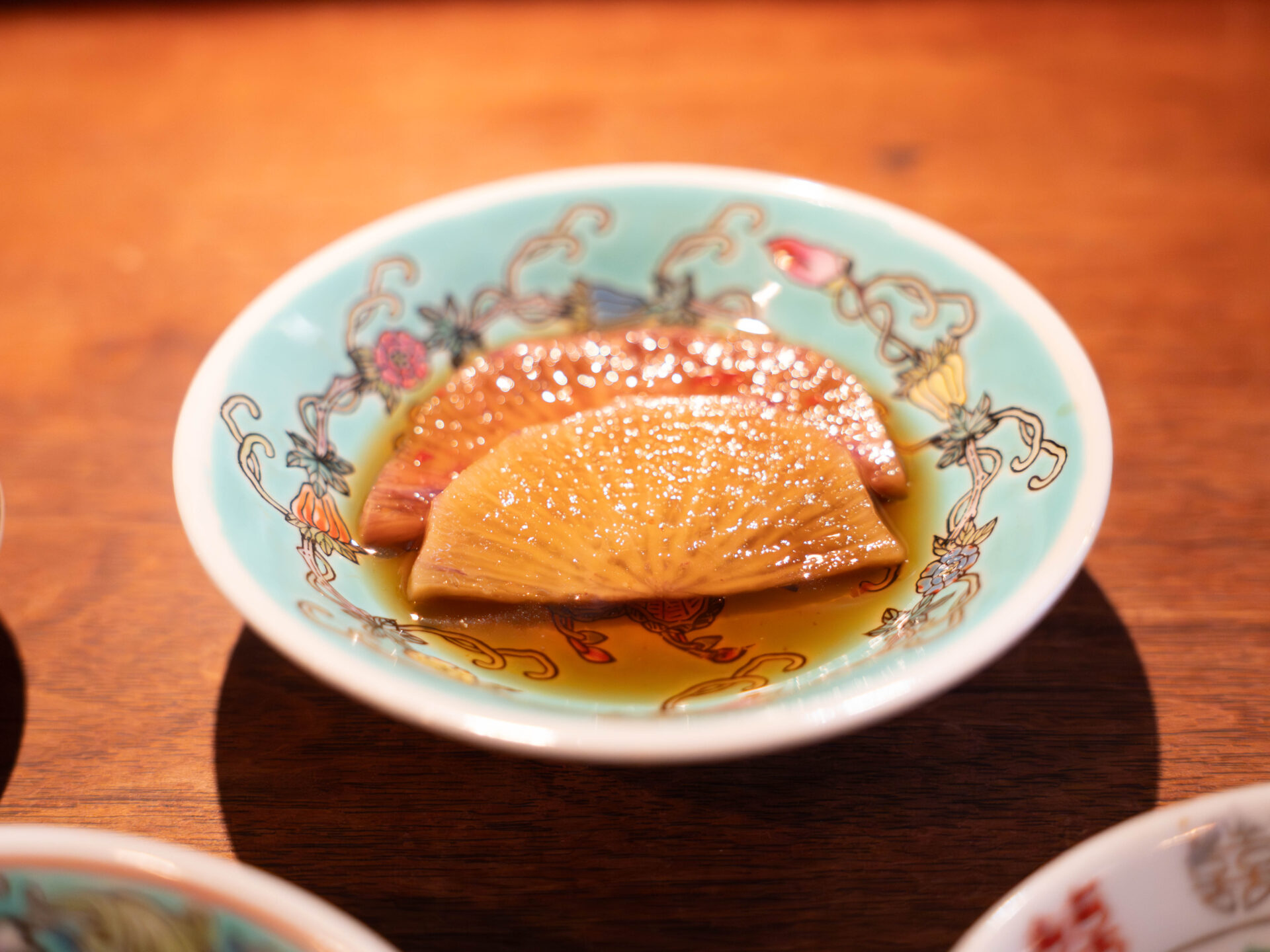
■ Amberjack from Kochi with Jiao Ma Oil and Ajimarumi Daikon
Rich, fatty amberjack is delicately paired with jiao ma — a fragrant chili oil.
Topped with slices of Ajimarumi daikon, a traditional Nara heirloom variety, the dish is lifted by restrained acidity and a subtle heat that beautifully enhances the natural sweetness of the fish.
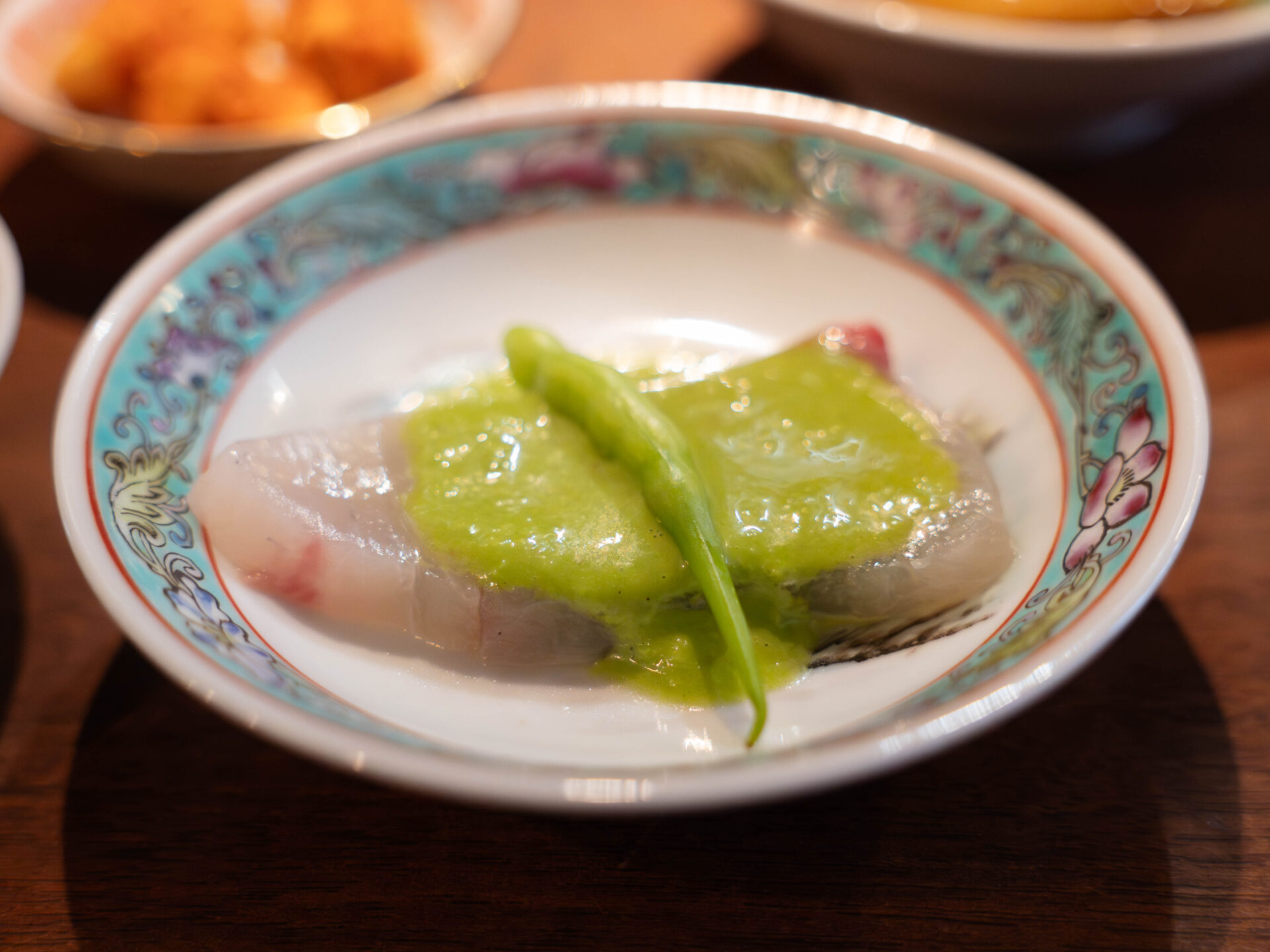
■ Snap Peas with Chinese Pickles
Crisp snap peas are dressed with umami-rich Chinese pickles.
The freshness of the vegetables and the depth of fermentation harmonize, creating a quiet yet striking contrast within the appetizer selection.


Nourishing Soup
At the heart of this gentle, healing soup are Usui peas and Job’s tears (hatomugi), whose soft sweetness forms the base.
Layered upon that are the deep umami of dried scallops and dried shrimp, the citrusy brightness of Yamato tachibana (a native citrus from Nara), and the earthy richness of shirokinoko (white wood ear mushrooms).
Each sip gradually relaxes the body, leaving a calm, lingering finish.
It’s not flashy—but it’s profoundly comforting.
A soup you could happily drink every day, and with each bowl, feel a quiet kind of happiness.
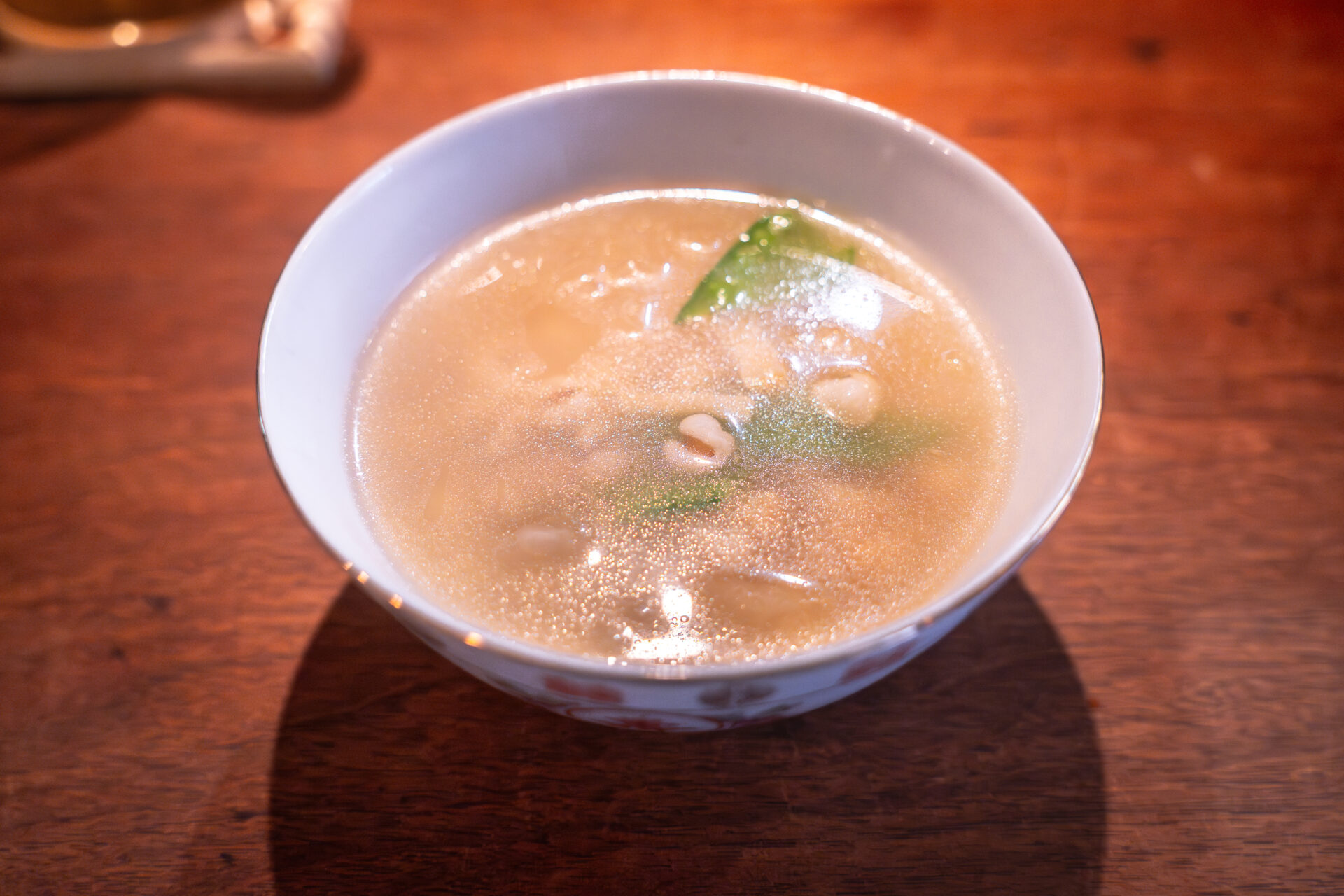
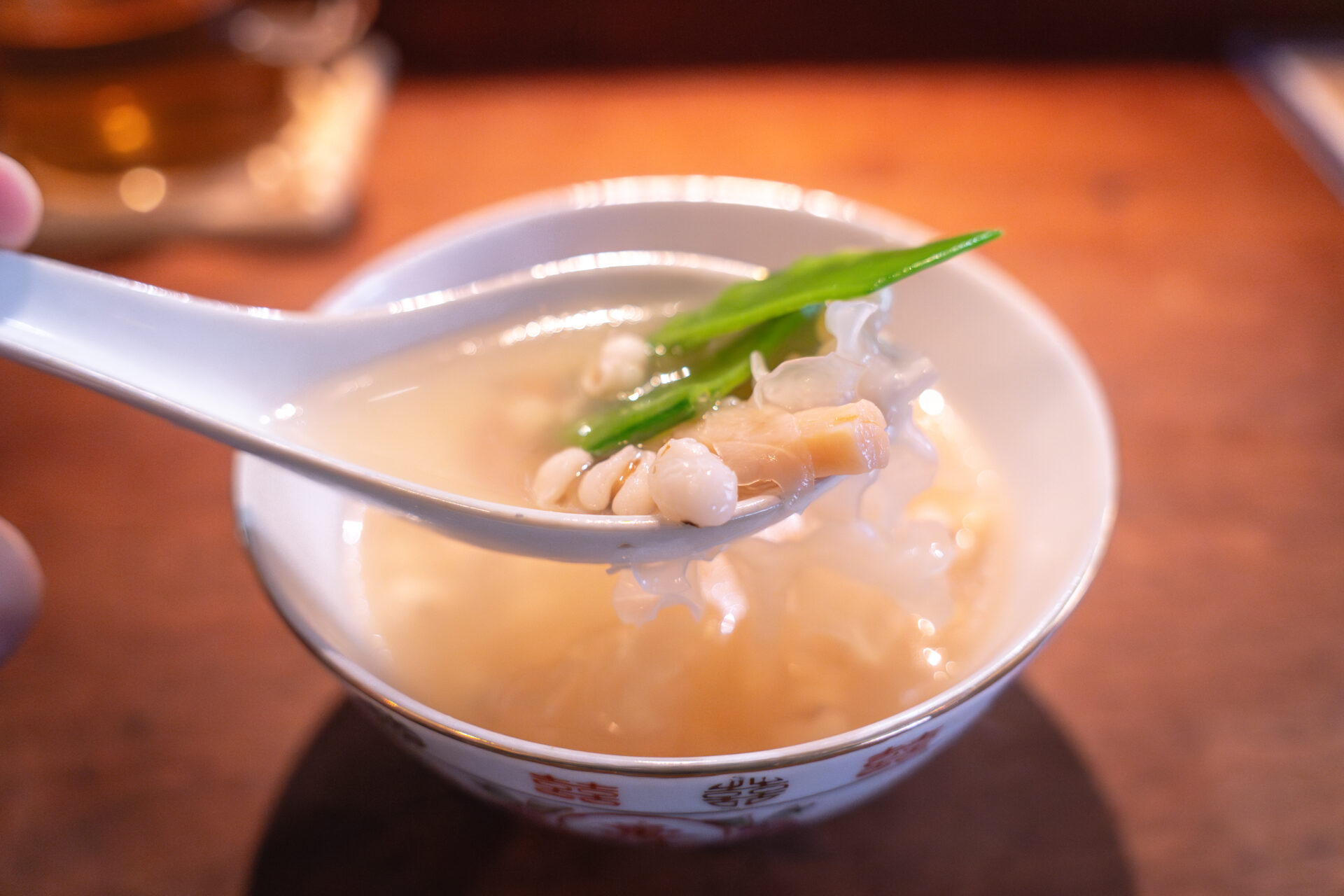
Arrival of Dim Sum
As the steamer lid is lifted, gentle steam and savory aroma rise softly into the air.
What follows is a dim sum course filled with depth and a subtle touch of elegance.
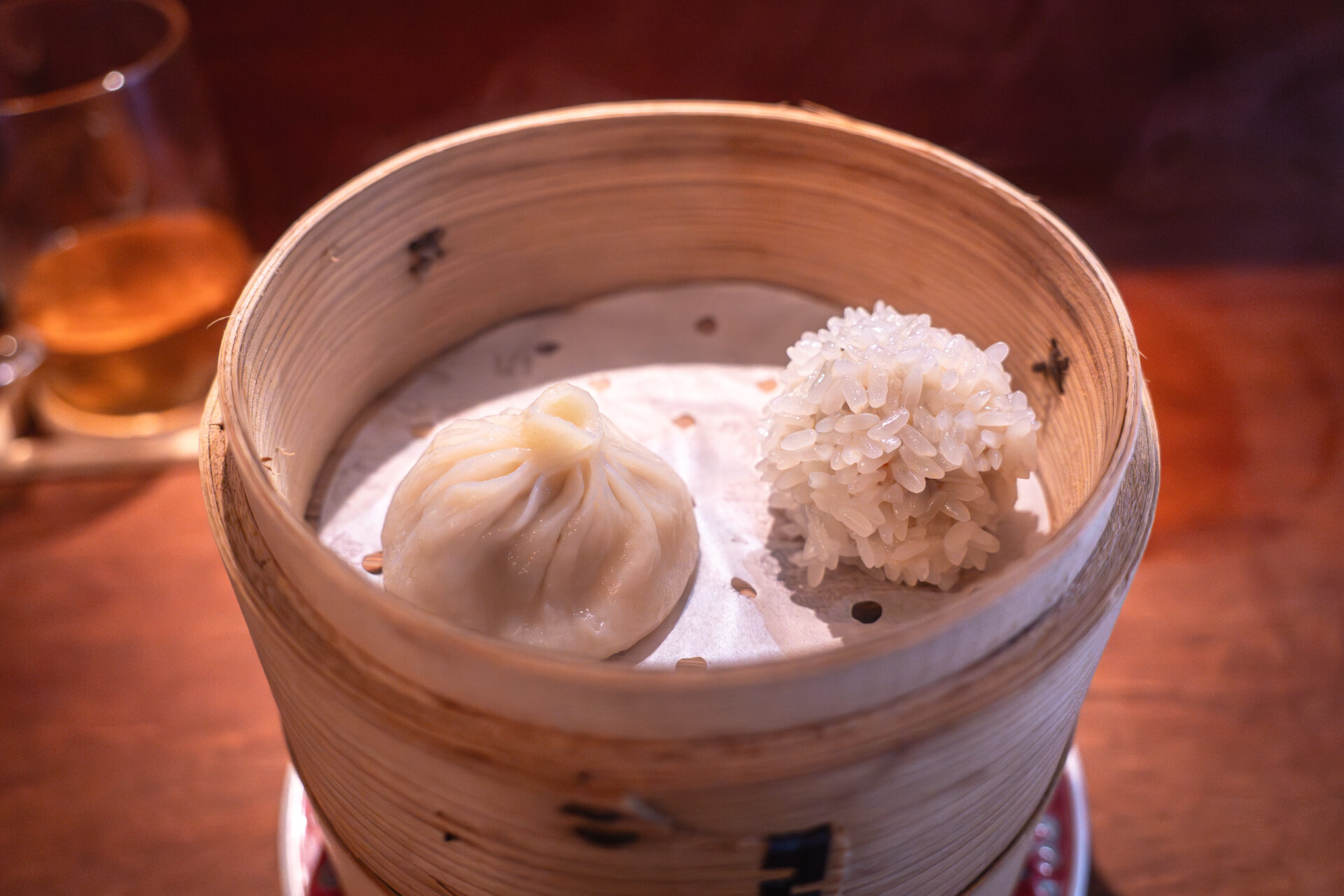
■ Glutinous Rice and Yamato Pork Shumai
The tender glutinous rice softly crumbles, blending beautifully with the umami-rich Yamato pork.
It’s paired with Yunnan Baiyao (Gynura bicolor), known as a health-promoting vegetable.
The sticky rice and fragrant greens leave a lasting, satisfying impression.
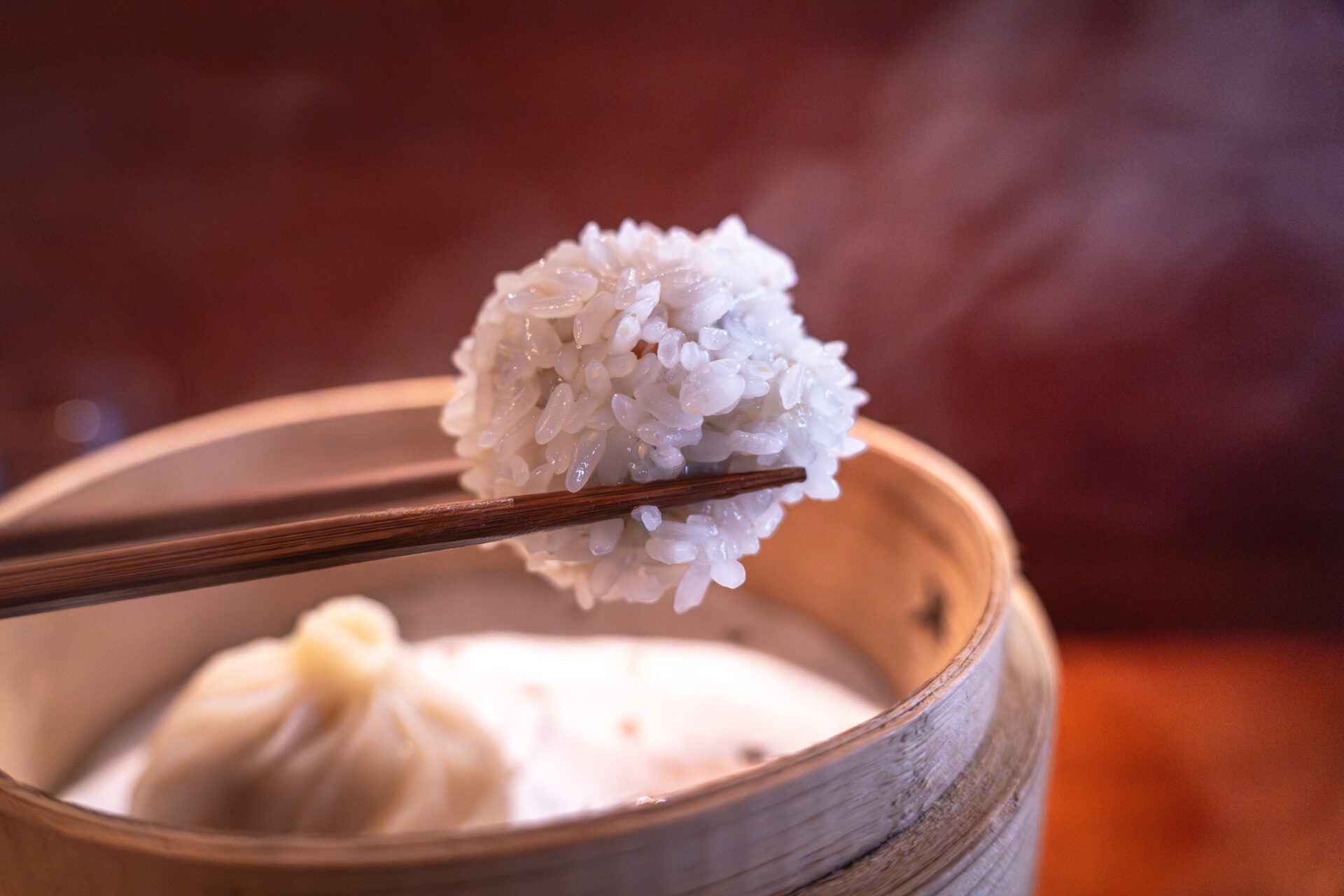
■ Xiaolongbao with Yamato Pork
Piercing the delicate skin releases a warm burst of flavorful broth.
The rich pork flavor is complemented by a house-made dipping sauce with fine slivers of ginger.
Smooth and full-bodied, yet clean in its finish — you can enjoy it both with or without the sauce, each offering a unique aftertaste.
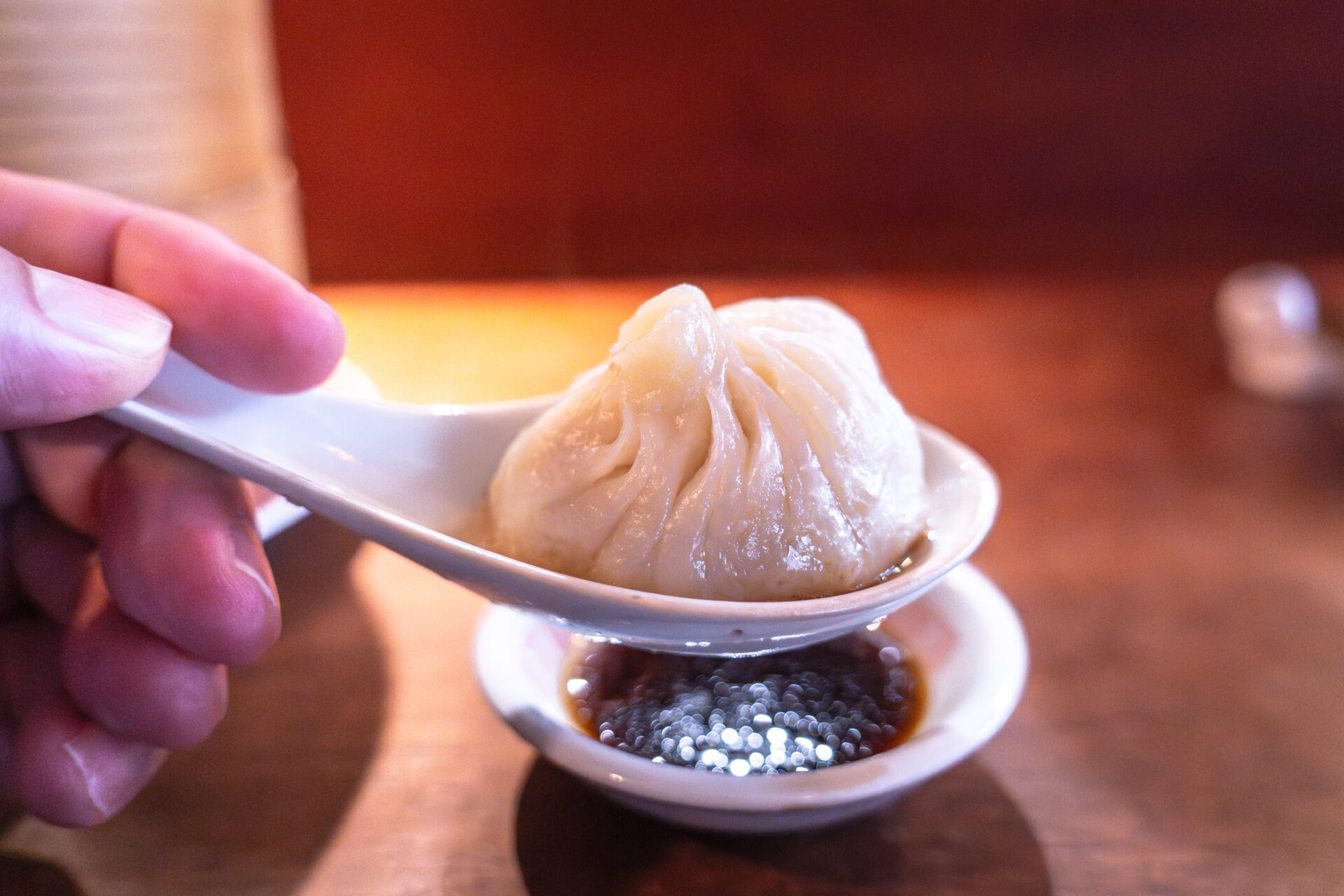
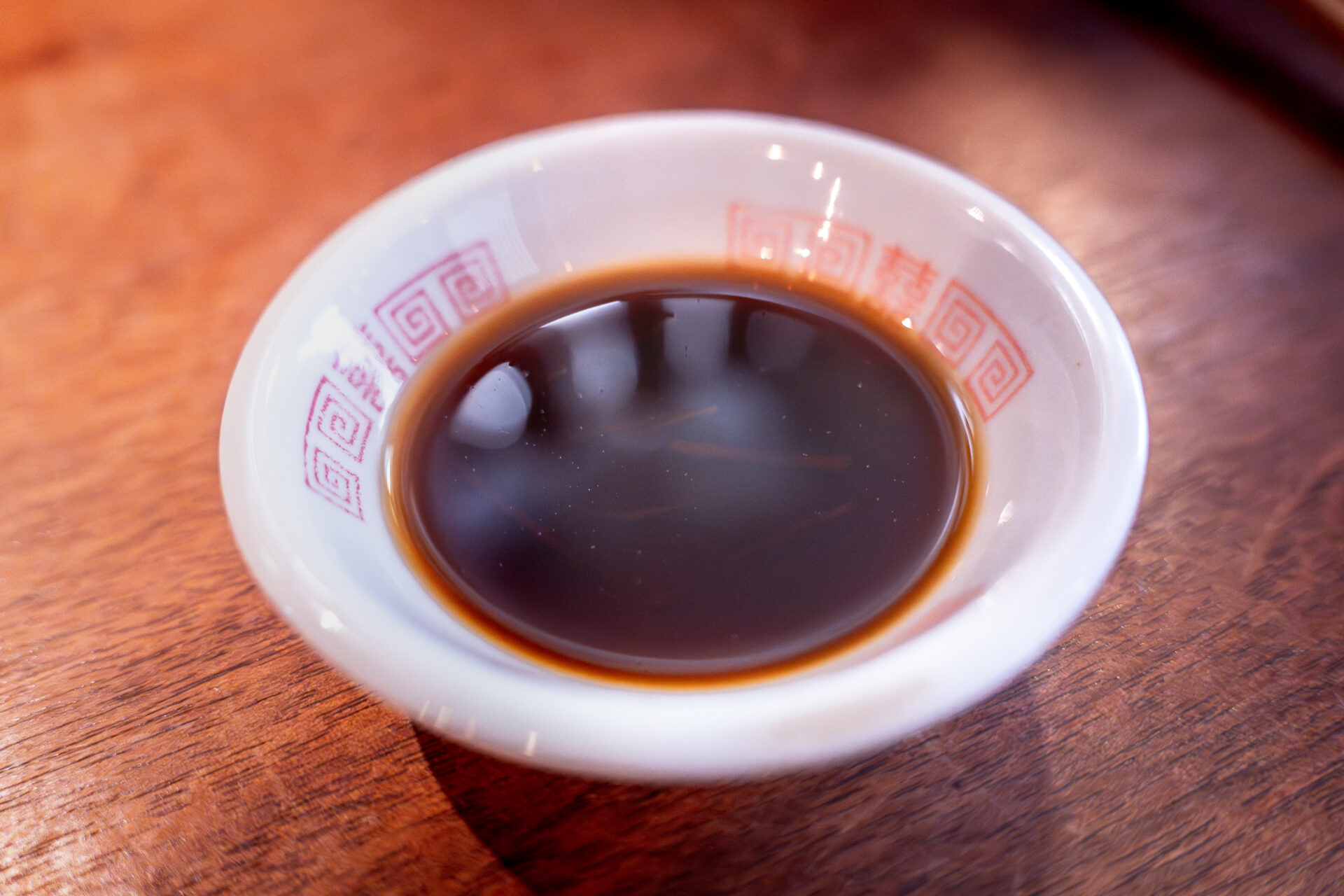
■ Steamed Dumpling with Shrimp and Garlic Chives
Fresh-picked garlic chives deliver a bold fragrance, perfectly balanced by the plump, springy texture of shrimp.
The flavor profile is complete as-is — no dipping sauce needed.
■ Fennel Steamed Dumpling
This dumpling showcases the refreshing sweetness of fennel, a bright and aromatic herb.
Steaming amplifies its clean herbal scent, adding a fleeting moment of cool clarity to the dim sum experience.
What ties all these dumplings together is the finesse in their paper-thin wrappers and the precision in steaming.
Inside each small steamer basket, vegetables, meats, and aromas resonate in perfect harmony.
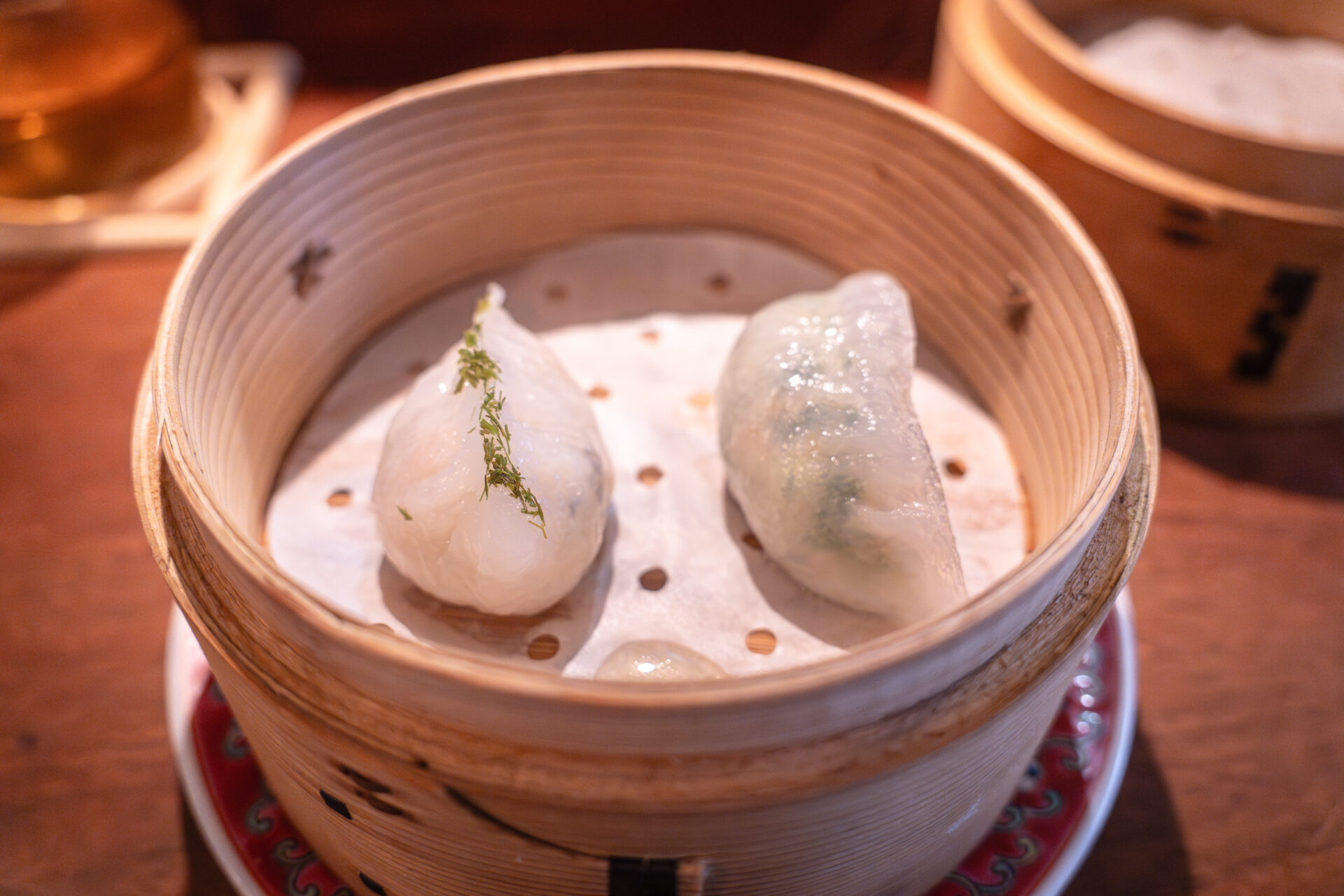

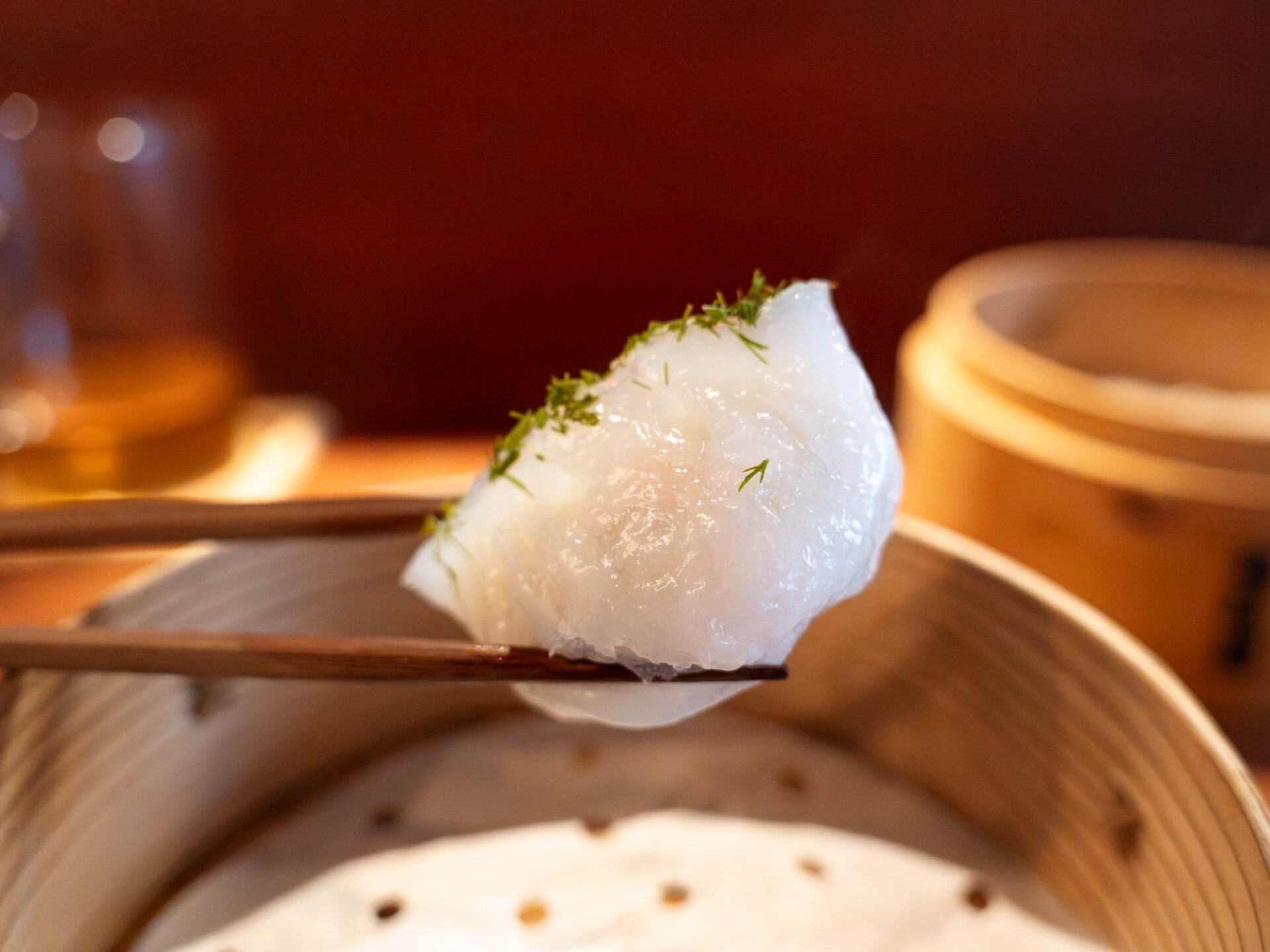
■ Cantonese-Style Spring Roll with House-Made Doubanjiang
Inside the perfectly crisp spring roll are hearty chunks of freshly picked Issun broad beans (soramame).
The beans’ fluffy texture and natural sweetness create a gentle, comforting flavor profile.
Served alongside is a house-made doubanjiang (fermented chili bean paste) crafted from the same broad beans.
Add a small dab to your bite, and a soft spiciness with rich fermented depth gently deepens the finish.
■ Fried Dumpling with Glutinous Rice Wrapper
This dumpling, wrapped in glutinous rice dough, is crispy and aromatic on the outside, with a satisfyingly chewy interior.
The savory filling is tightly sealed inside, and though the preparation is simple, the textural contrast is striking.
A warm appetizer that delivers both comfort and satisfaction in a single bite.
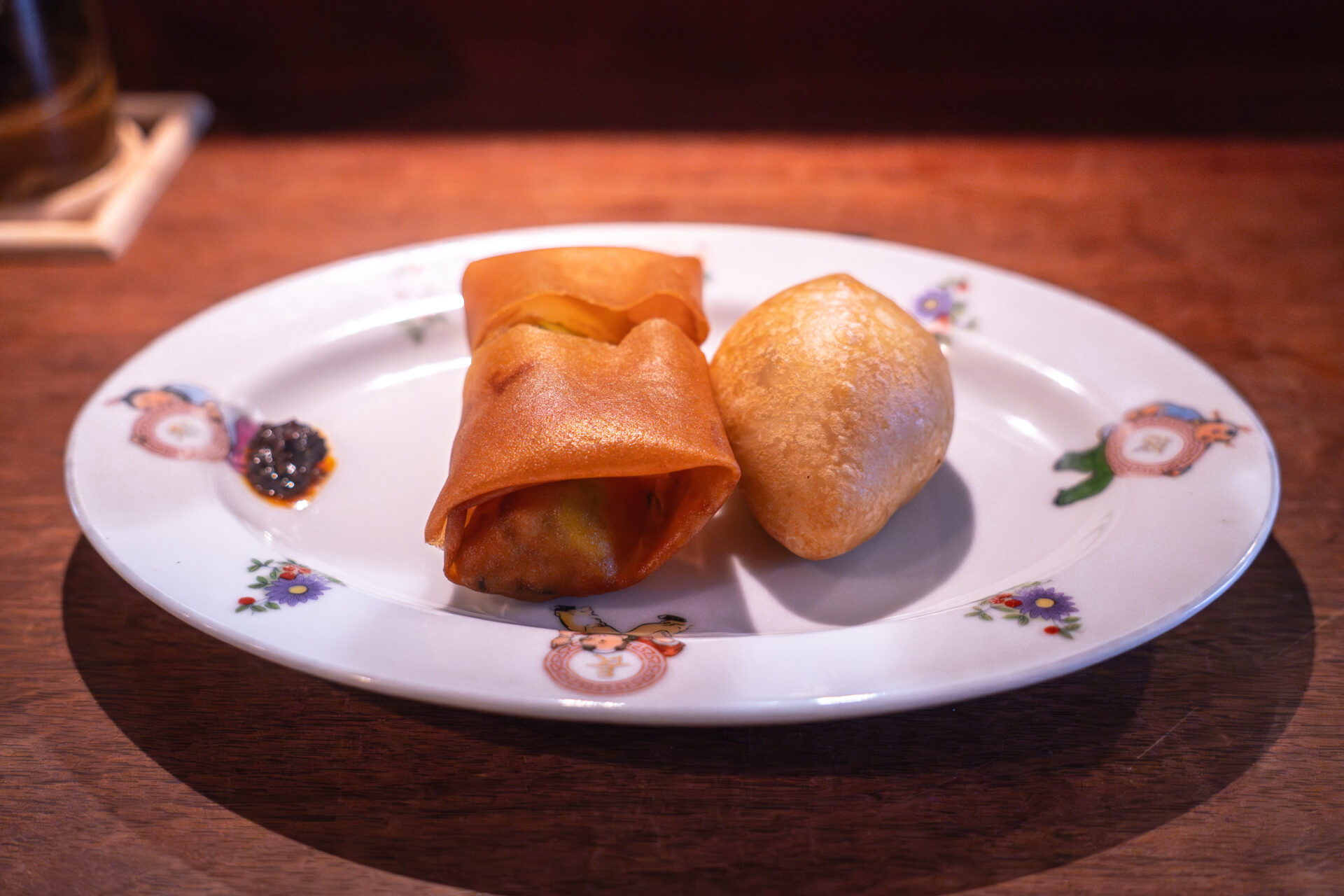
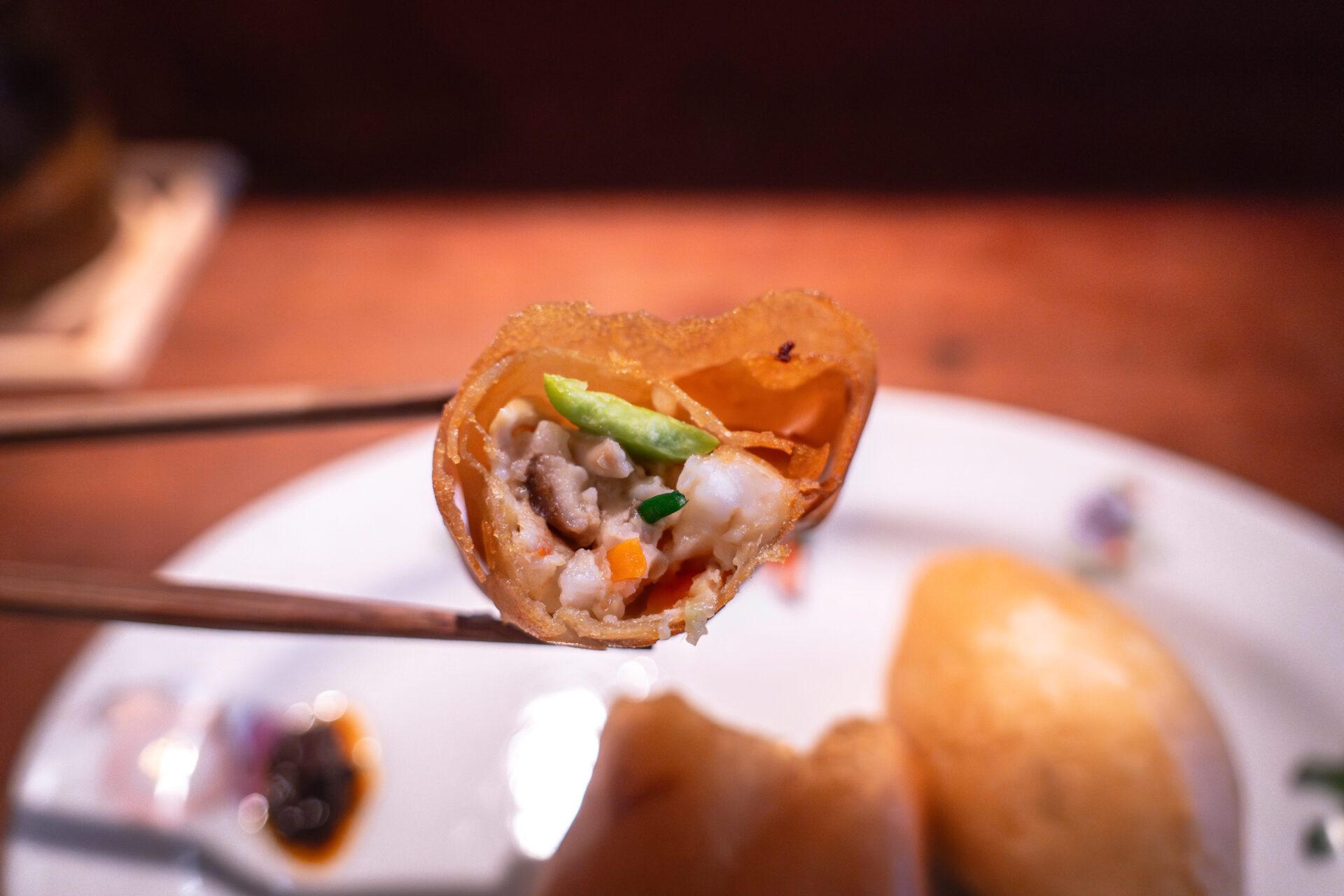
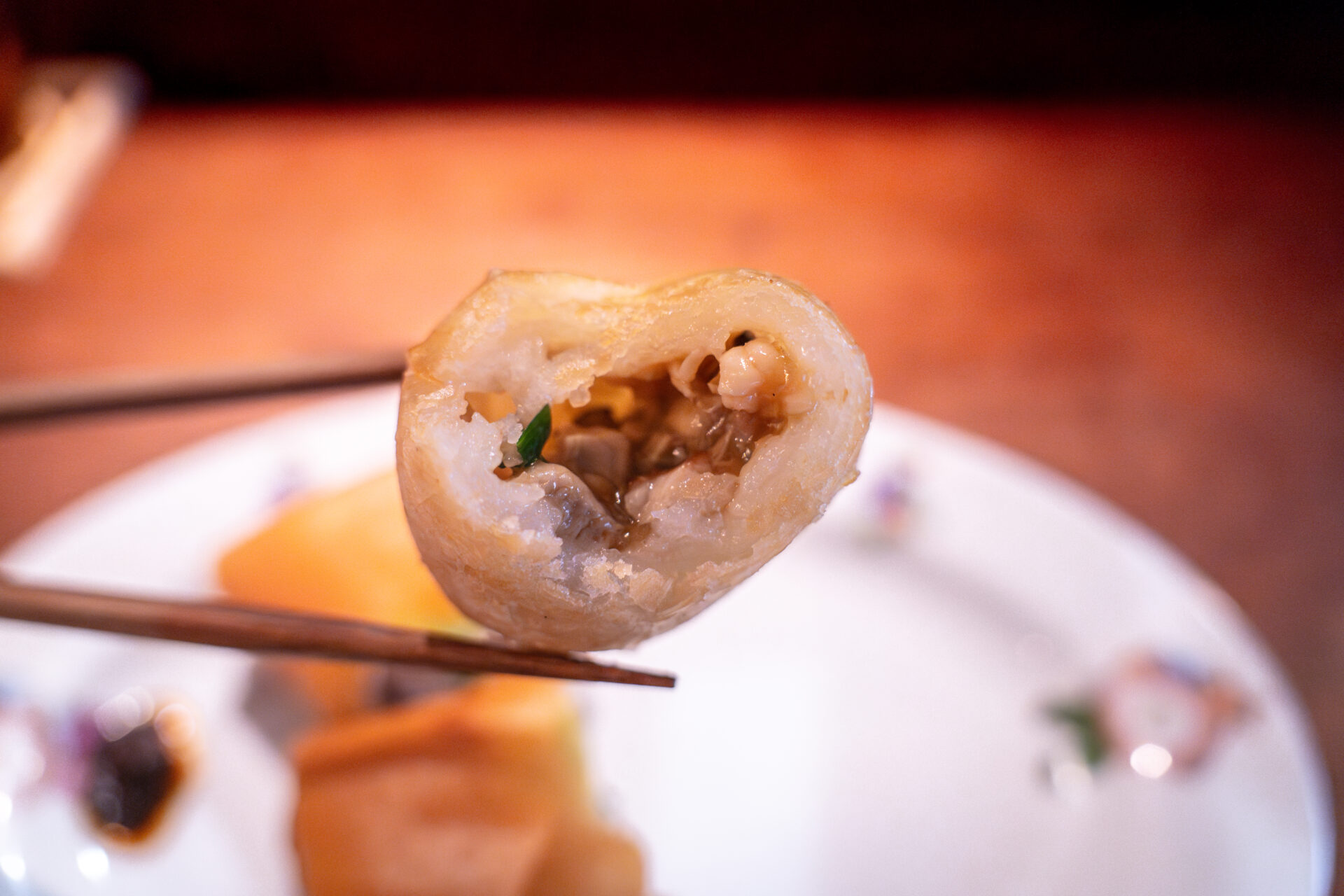
Steamed Yamato Jidori Chicken and Log-Grown Shiitake with House-Made XO Sauce
Tender Yamato Jidori chicken and log-grown shiitake mushrooms from Nara are gently steamed together in a rich, house-made XO sauce.
As the dish steams, the deep umami of the XO sauce permeates everything, allowing the chicken’s supple texture and the shiitake’s earthy aroma to harmonize beautifully.
A light dusting of glutinous rice on the surface adds a subtle textural contrast when you take a bite.
Fragrant and nourishing, this dish rises with delicate steam—quiet in presentation, yet full of strength and depth.
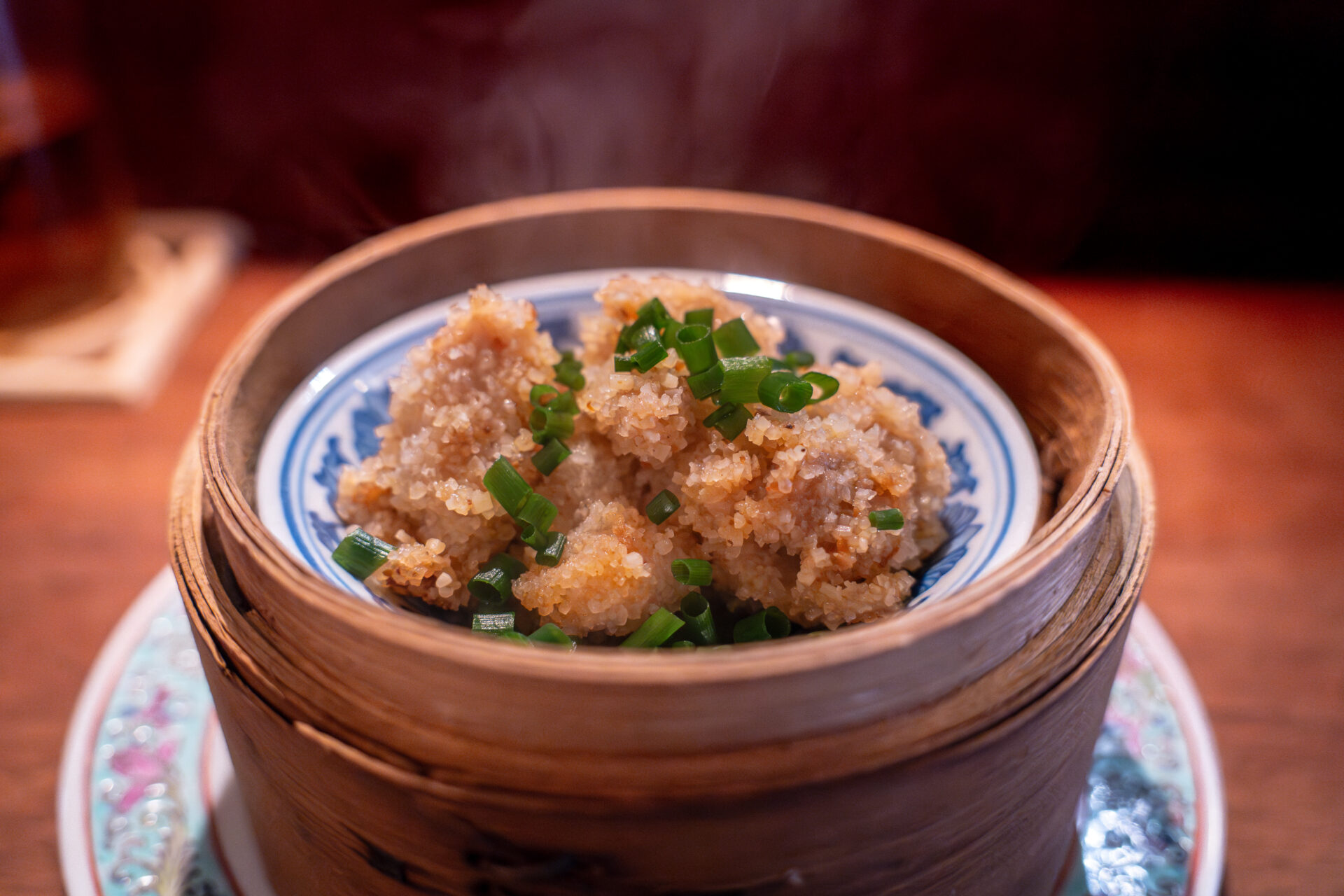
Steamed Bun with House-Made Curry Sauce
Inside a soft, fluffy steamed bun lies a filling blended with house-made curry sauce.
As you break into it, a gentle aroma of mellow spices rises, and with each bite, a well-balanced harmony of sweetness and spice unfolds.
The heat is subtle, making the flavor feel familiar and comforting — almost nostalgic.
A warm, playful touch within the course, this dish adds a lighthearted moment without ever breaking the quiet elegance of the meal.
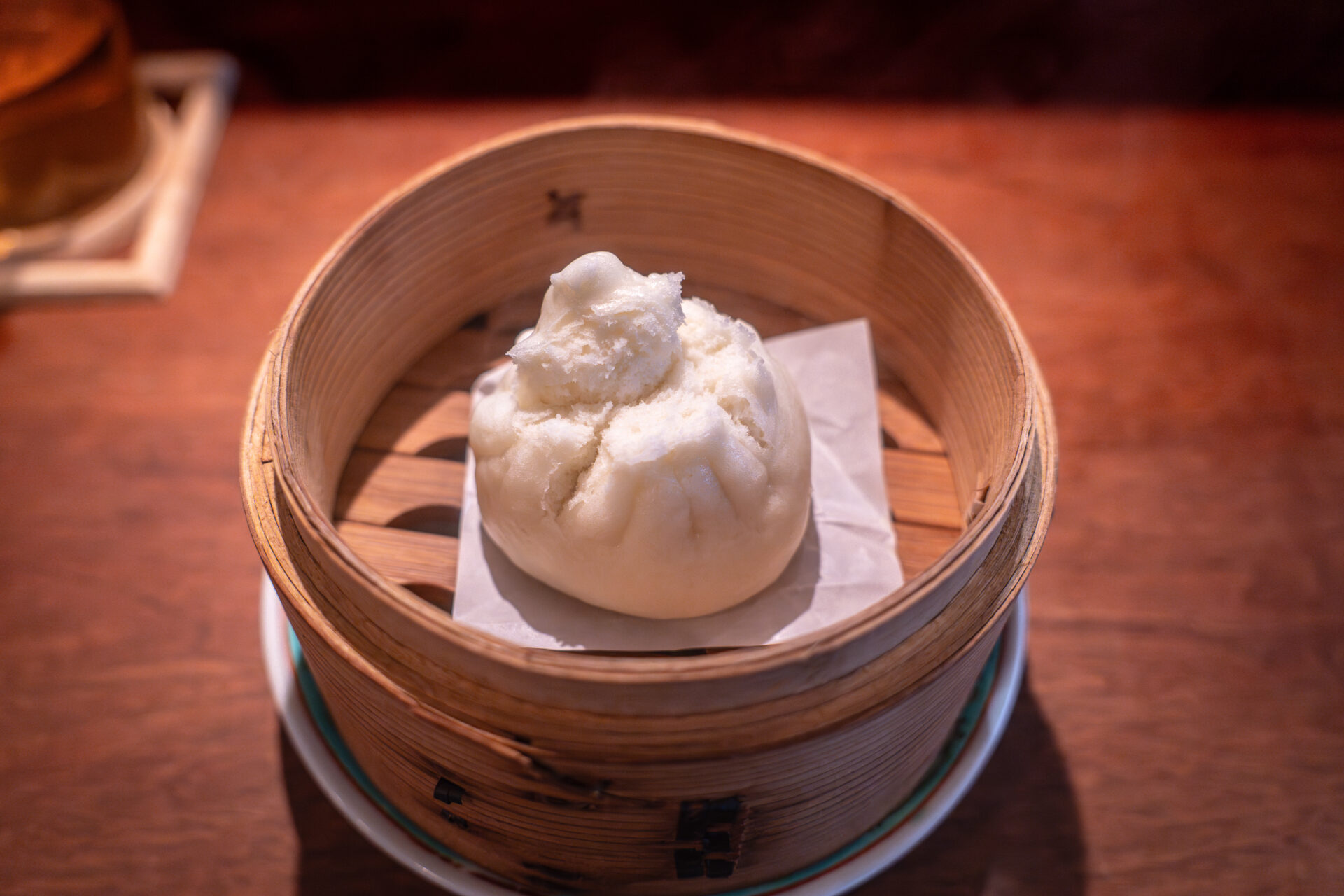
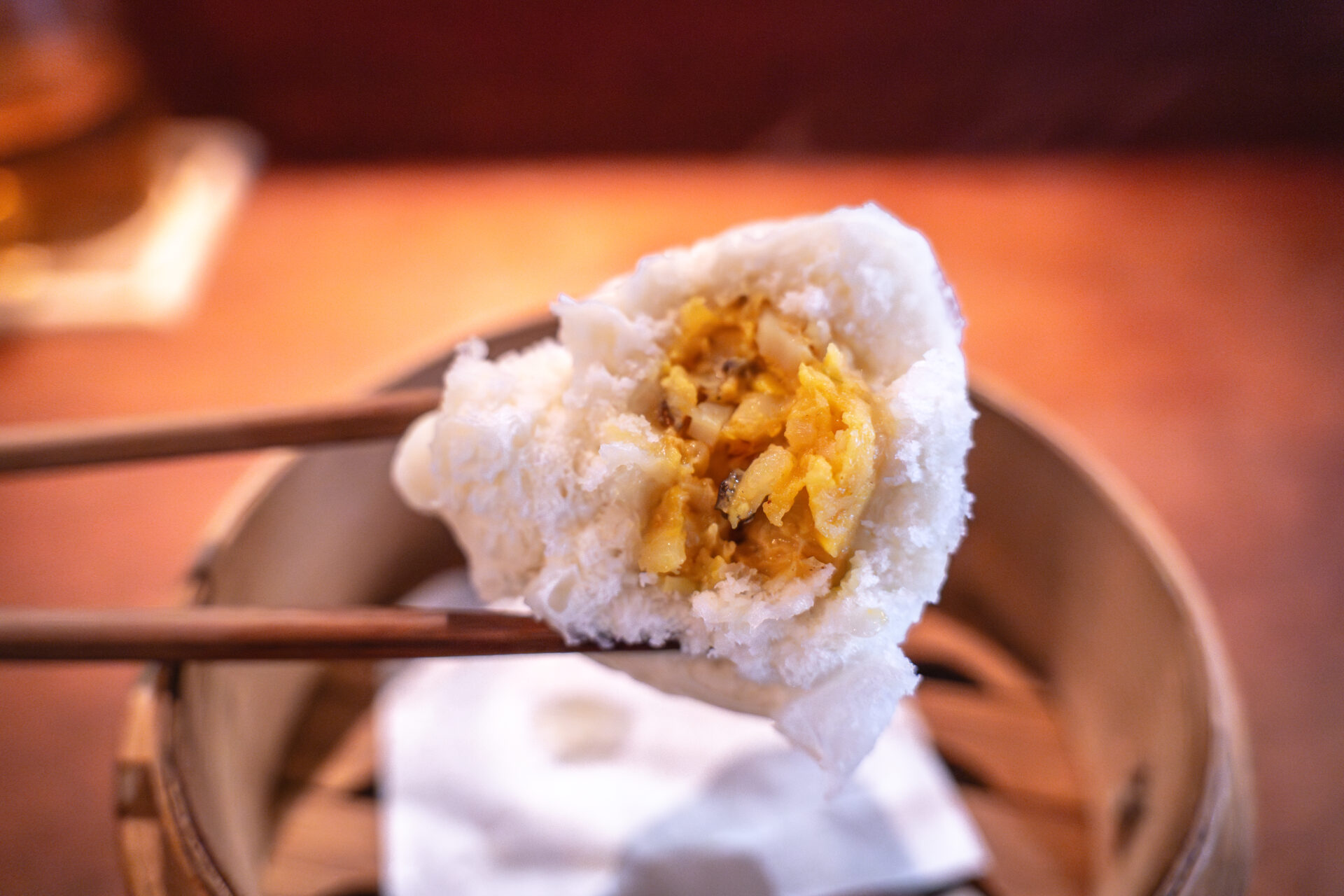
Final Course
The meal concludes with a choice between Mapo Tofu served with noodles or a Cantonese-style sticky rice dumpling wrapped in a lotus leaf.
This time, the choice was the Cantonese-Style Lotus Leaf Zongzi.
■ Cantonese-Style Lotus Leaf Zongzi
As the lotus leaf is gently unwrapped, a delicate aroma softly rises and fills the air.
Inside, glutinous rice mixed with black rice from Asuka Village cradles salted duck egg yolk, flavorful Yamato Jidori chicken, and locally grown shiitake mushrooms from Nara.
To fully enjoy it, the lotus leaf is flipped over before eating, allowing the aroma to infuse each bite.
A dish that offers a gentle, fragrant finish — a serene landing to conclude the meal.
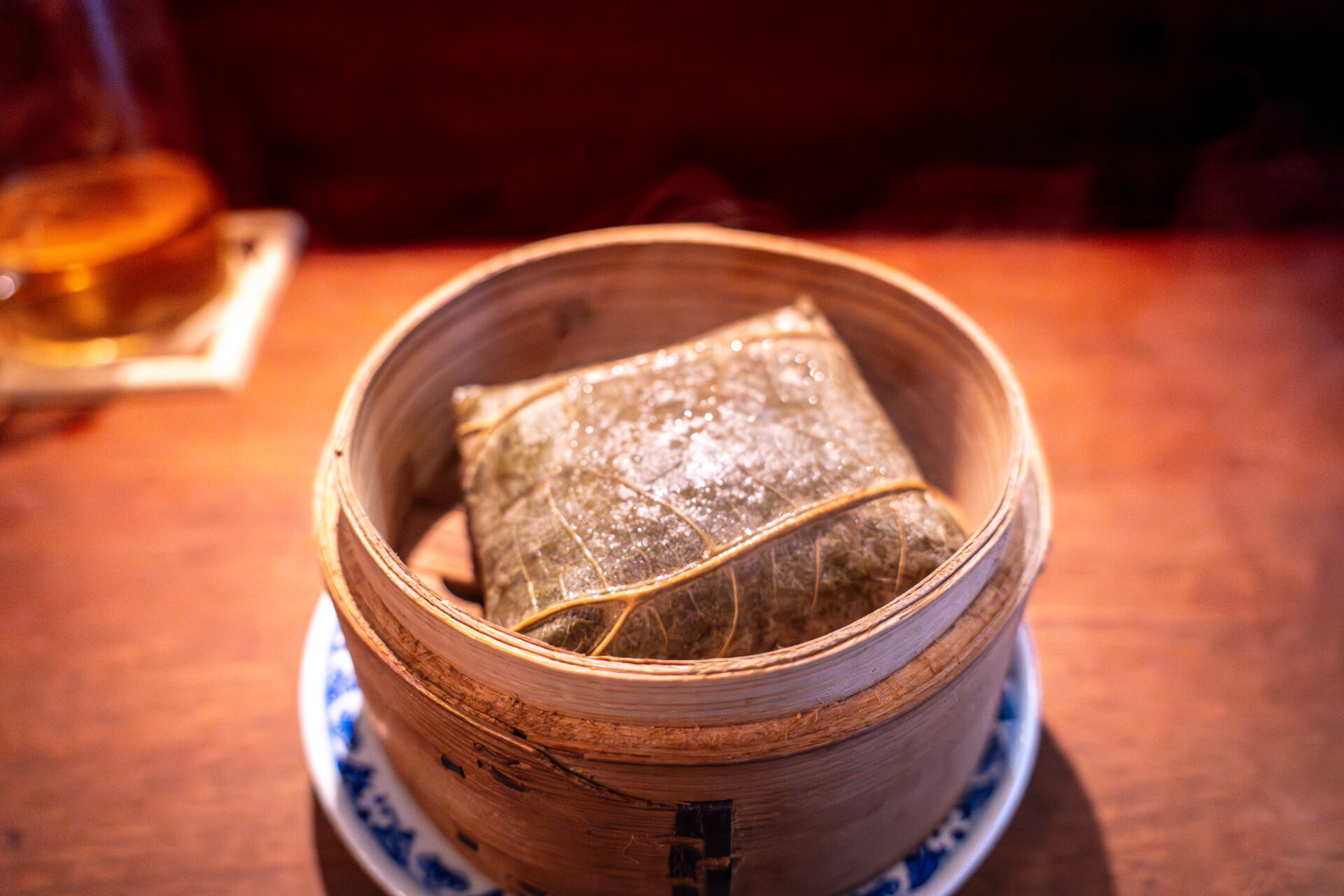
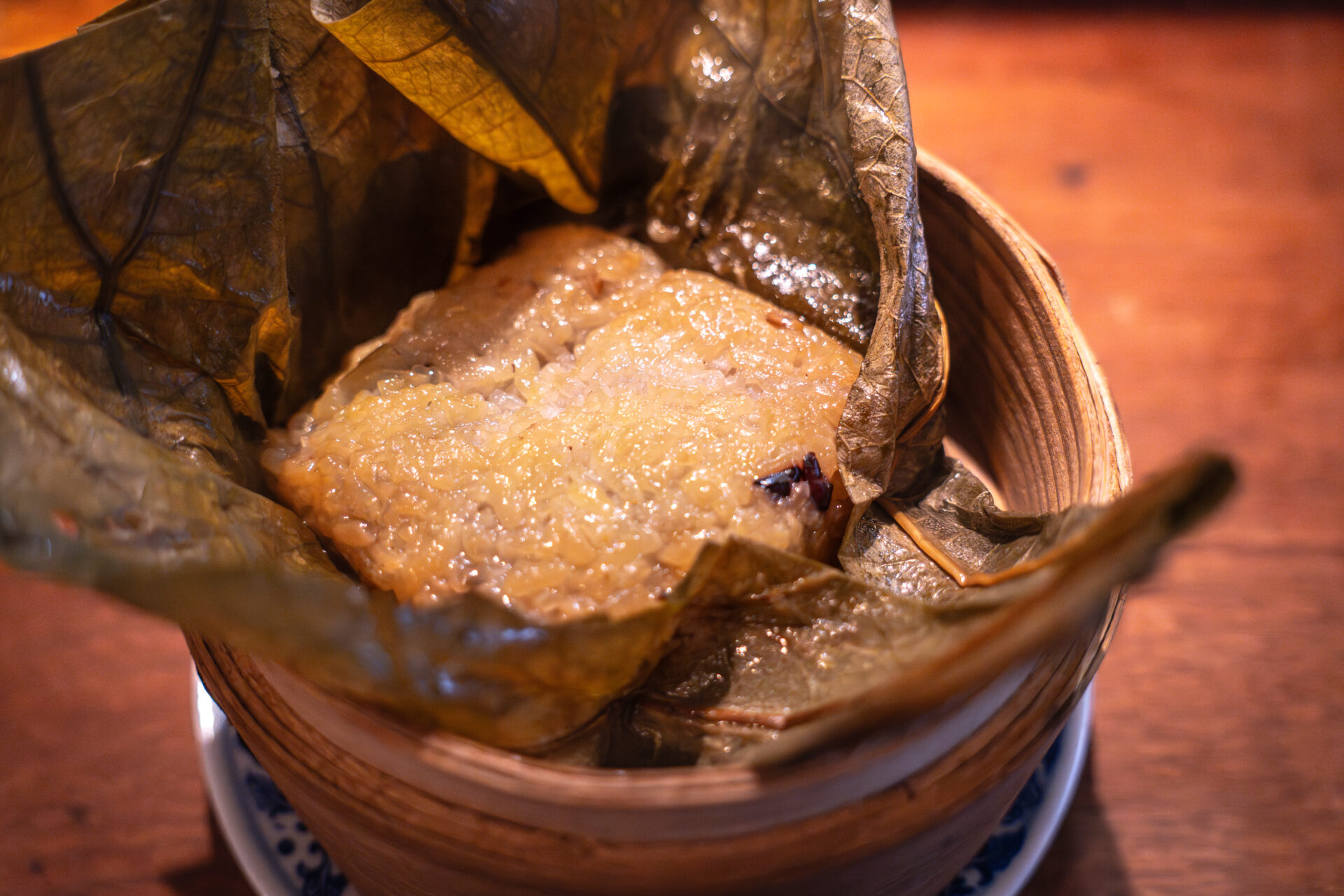
■ Mapo Tofu
Appearing toward the end of the course, this Mapo Tofu masterfully blends the umami of Yamato pork with the tangy aroma of fermented vegetables.
The heat is gentle, but the dish carries a deep richness and layered fragrance that gradually warms the body from within.
Despite its softness—reminiscent of a light, milky broth—it maintains clear definition and structure.
A powerful yet graceful finale that stays true to KUKO’s unique expression of Chinese cuisine until the very last bite.
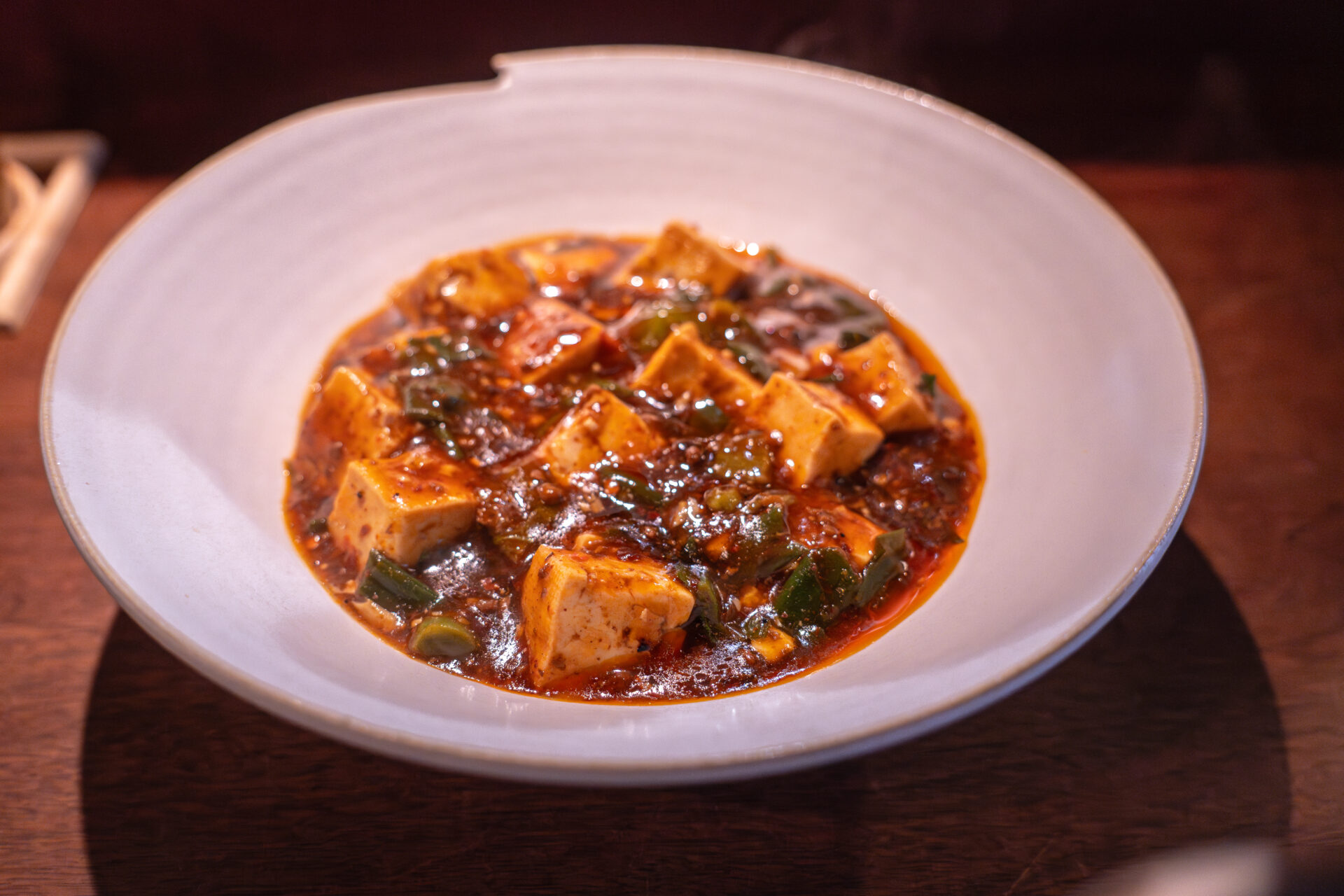
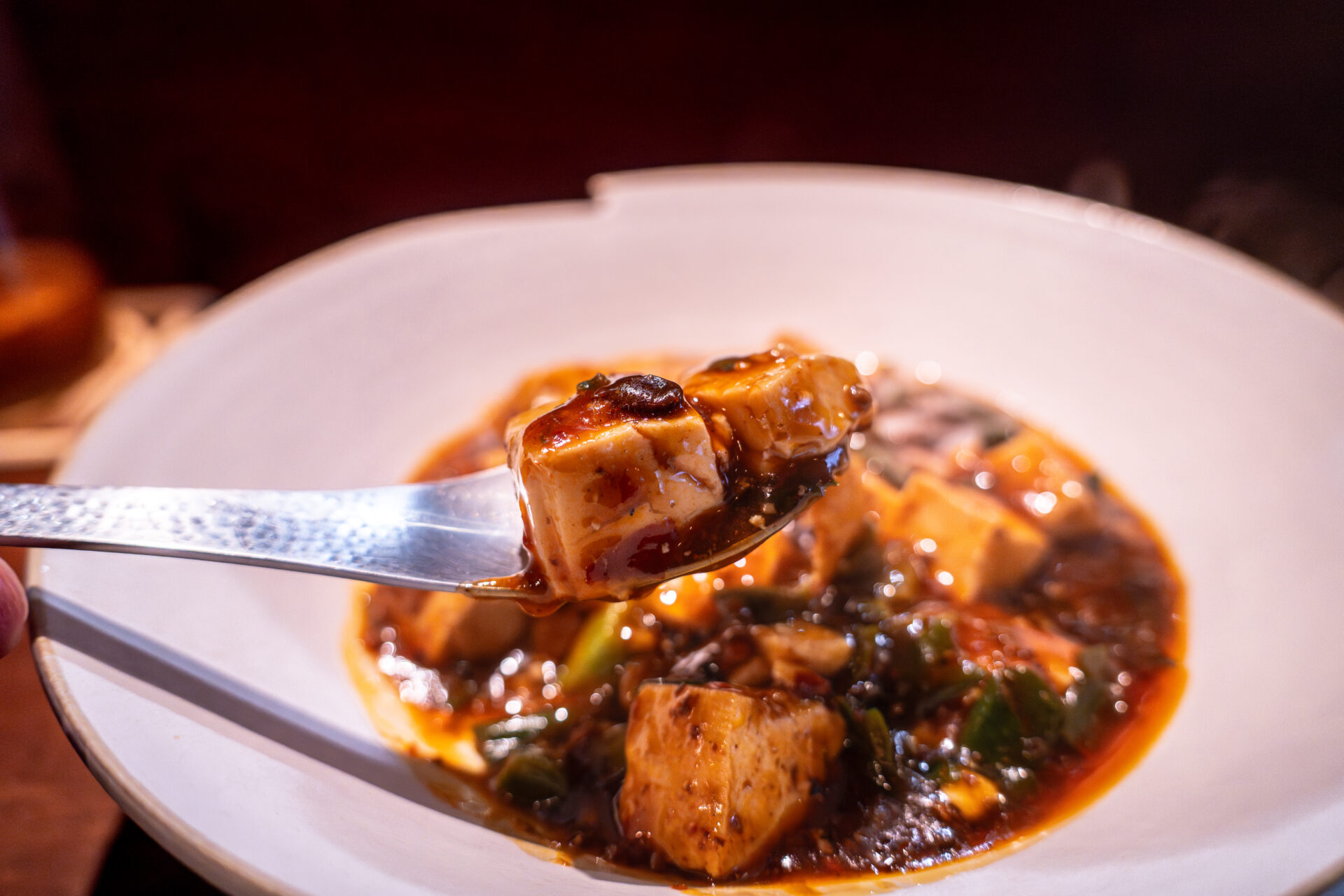
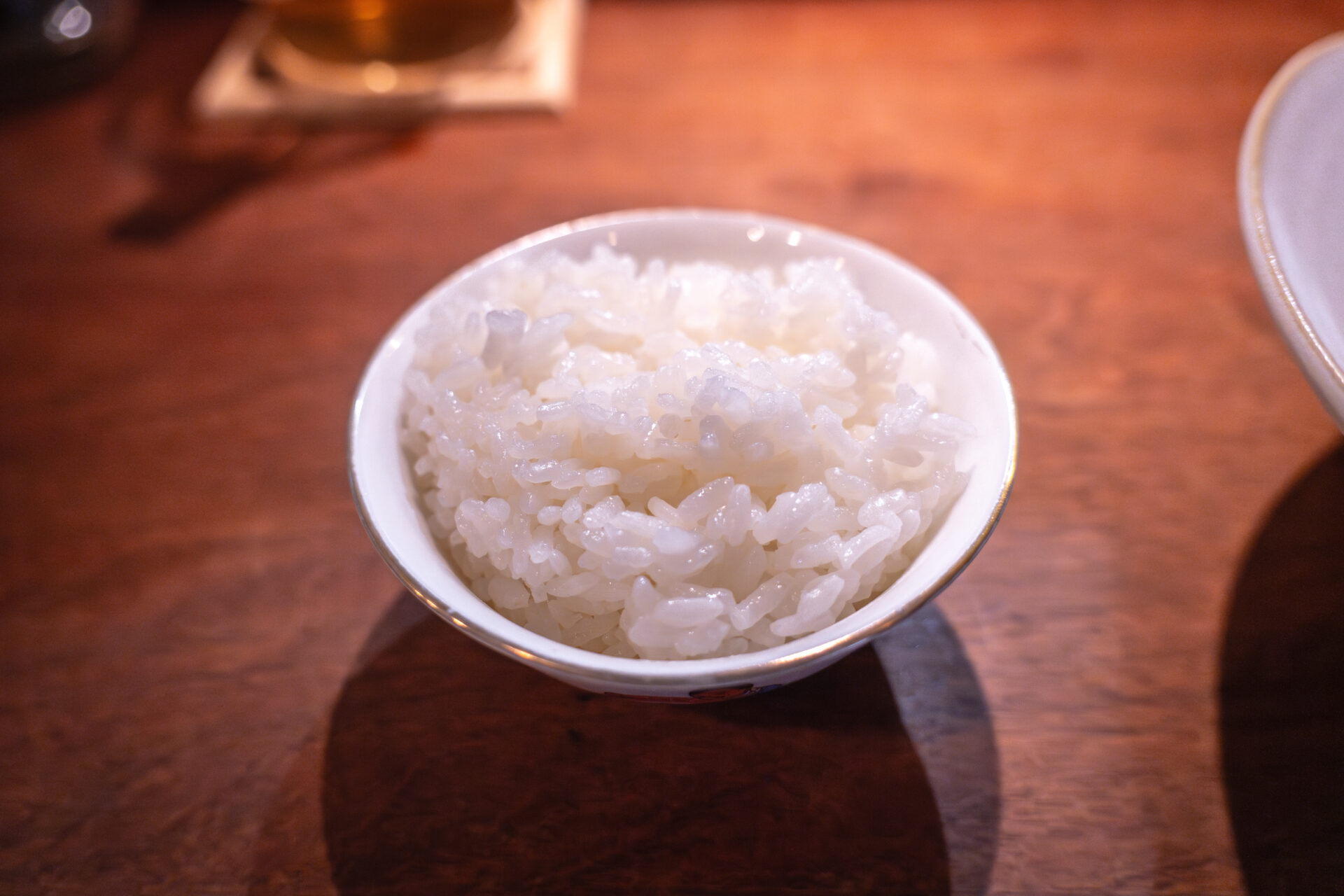
Dessert & Finale
■ House-Made Almond Tofu with Passion Fruit Sauce
Silky and delicate, the house-made almond tofu melts gently on the tongue.
A spoonful of passion fruit sauce from Okinawa adds a bright, tropical lift.
The seeds scattered alongside the fruit pulp provide a playful crunch, offering a lively contrast to the tofu’s smooth texture.
Sweetness and light acidity pass through in perfect harmony — a refreshing finish.
■ Ma Lai Gao with Laozao Sauce
A traditional Hong Kong-style steamed sponge cake, Ma Lai Gao, is paired with a house-fermented glutinous rice sauce known as Laozao.
The soft, airy sponge absorbs the mellow sweetness and depth of the fermented sauce, releasing an aroma reminiscent of ripe fruit.
Served warm, it leaves a lasting impression — a quiet, memorable close to the meal.
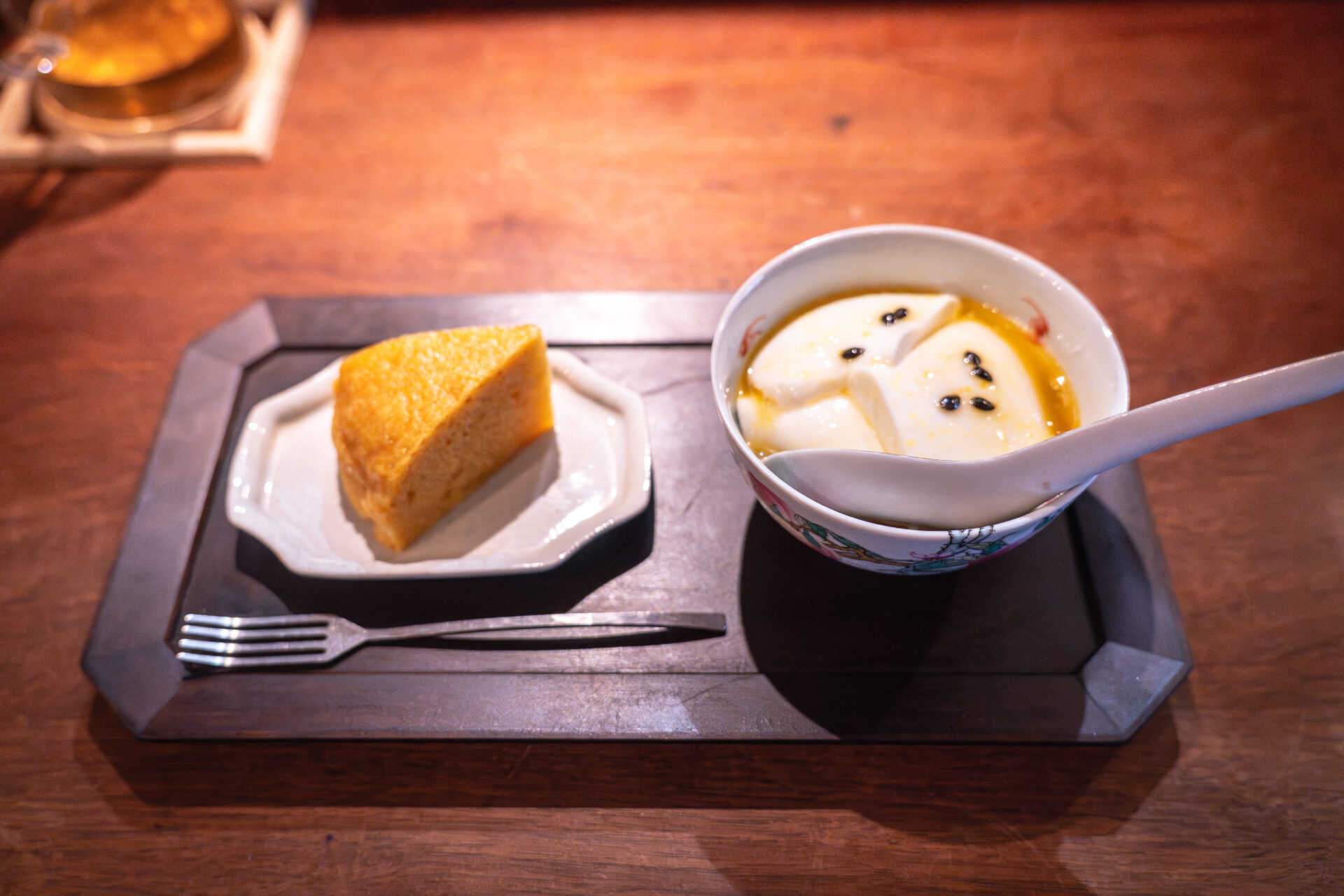
Summary & Impressions
The dining experience at KUKO, set against the quiet backdrop of Naramachi, unfolded with a sense of calm and clarity — each dish relaxed and unforced, yet firmly rooted in intention and technique.
The lunch course, centered on dim sum and tea-inspired dishes, quietly wove together heirloom vegetables from Nara and subtle hints of fermentation. Before I realized it, I was left with a deep and lingering impression.
Most notably, nearly all the vegetables used were freshly harvested that morning from the restaurant’s own farm.
Their vibrant aromas and crisp textures brought a distinct presence to every plate, defining the overall character of the cuisine.
The procession of dim sum, served steaming from bamboo baskets, showcased remarkable precision in cooking, wrapping, and seasoning — moments that effortlessly brought smiles to the table.
Toward the end, the Mapo Tofu stood out as a highlight: mellow yet profound, with fermented vegetables playing the starring role.
Without relying on heat, the dish led with aroma — a memorable demonstration of how flavor can be built through fragrance alone.
There are no flashy theatrics here.
And yet, each dish quietly etches itself into memory — a course not only gentle on the body, but also, perhaps more importantly, gentle on the soul.
This is Chinese cuisine that feels not just nourishing, but deeply memorable.
Reservations & Access Information
Reservation Details
-
KUKO operates strictly by reservation only.
Reservations open at 9:00 PM on the 1st of each month for the following month.
Example: Reservations for August begin on July 1 at 9:00 PM.Reservations must be made by following instructions provided on the restaurant’s Instagram・Facebook or official website.
Due to high demand, reservation slots can fill quickly — some months may even switch to a lottery system.
Access
-
Address:
913-2 Kidera-cho, Nara City, Nara Prefecture, JapanBy Train:
-
JR Sakurai Line – Kyobate Station: approx. 11–12 minutes on foot (about 730 m)
-
Kintetsu Nara Station: approx. 16–20 minutes on foot (1.3 km)
By Bus:
From JR Nara Station or Kintetsu Nara Station, take a bus to the Kidera-cho stop → just a short walk from thereBy Taxi:
Taxi is also a convenient option. The traditional machiya townscape along the way makes the ride especially pleasant. -
Opening Hours & Regular Holidays
-
Open Days: Tuesday to Saturday
-
Lunch: 11:30 AM – 2:00 PM
Start time between 11:30–12:00 (punctual start required)
Note: Lunch service is currently paused. Reopening updates will be posted on Instagram. -
Dinner: 6:00 PM – 9:00 PM (starts promptly at 6:00 PM)
Closed: Sundays, Mondays, national holidays, and occasional irregular holidays
-
Pricing & Payment
-
Lunch: ¥5,000–¥5,999
-
Dinner: ¥15,000–¥19,999 (based on average reviews)
Payment Notes:
Credit cards and e-money are not accepted.
Only QR code payment services like PayPay are available.
A 10% service charge applies if no drinks are ordered.
- TAGS

